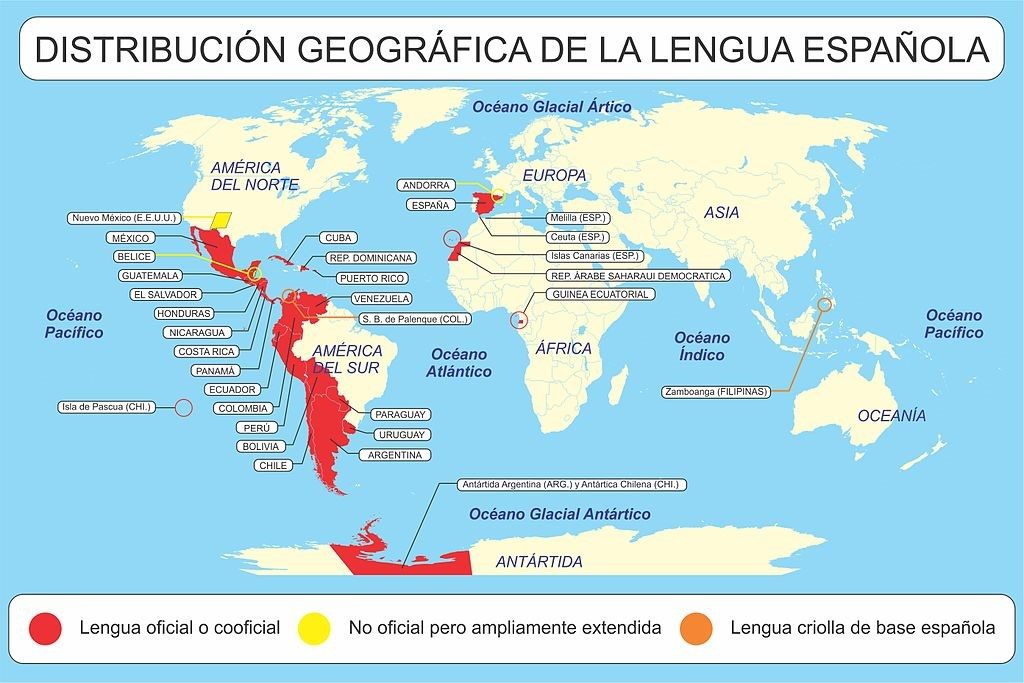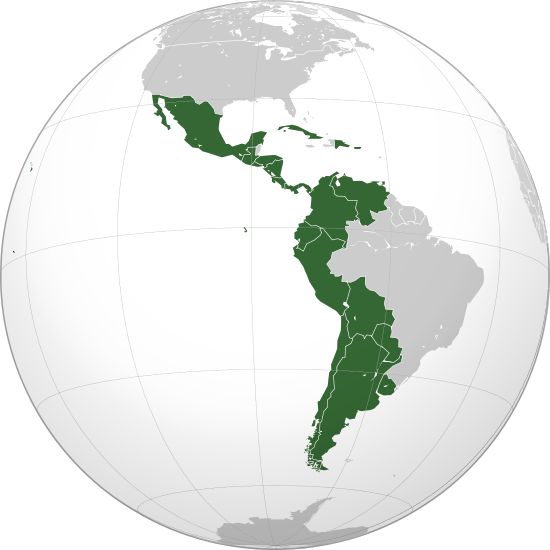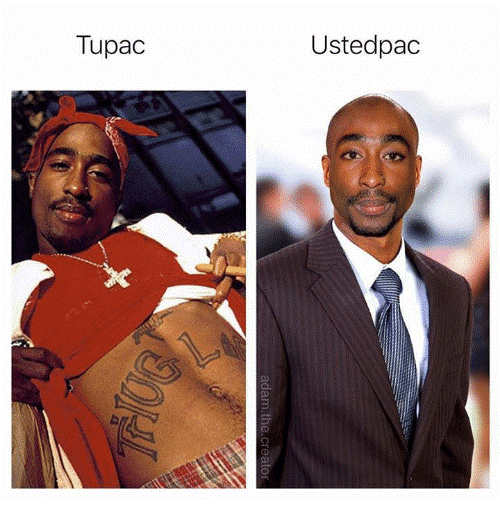Introducción al Español
Introducción al Español by Rita Palacios is licensed under a Creative Commons Attribution-NonCommercial-ShareAlike 4.0 International License, except where otherwise noted.
Conestoga College Institution of Technology and Advanced Learning
Kitchener, Ontario
Introducción al Español by Rita Palacios is licensed under a Creative Commons Attribution-NonCommercial-ShareAlike 4.0 International License, except where otherwise noted.
1
Spanish is the second most widely spoken language in the world, and in the Americas, it is by far the language spoken by most people alongside English, French, and many Indigenous languages.
This textbook offers a brief introduction to the Spanish language, covering topics from saying hello to travel, designed with the needs of post-secondary students in Canada in mind. This book is an Open Educational Resource (OER), which can be used and adapted free of charge.
Please review Conestoga College’s Accessibility Statement for OER Projects.
Rita M. Palacios, PhD is a language professor in the School of Interdisciplinary Studies at Conestoga College. She teaches Spanish and is an advocate of Open Educational Resources. Her work includes research on Indigenous literatures and cultures from Abyiayala with a focus on Mesoamerica.
The author acknowledges that she lives and works on the territory known as the Haldimand Tract, land that was granted to the Haudenosaunee of the Six Nations of the Grand River, and on the traditional territory of the Neutral, Anishinaabe, and Haudenosaunee peoples.
2
This project is made possible with funding by the Government of Ontario and through eCampusOntario’s support of the Virtual Learning Strategy (VLS) and Central Virtual Learning Platform (CVLP). To learn more about VLS and CVLP visit: https://vls.ecampusontario.ca.
![]()

3
This textbook is a Spanish adaptation of Introduction to French (2nd ed.) by Rita M. Palacios, produced and distributed under a CC BY-NC-SA 4.0 license. H5P activities were created by Rita M. Palacios and Betty Múnera.
This textbook has also reformatted, reorganized, and integrated excerpts from three works, each produced and distributed under a Creative Commons license:
Francais Interactif, by the Center for Open Educational Resources and Language Learning, Liberal Arts Instructional Technology Services, and The Department of French and Italian at the University of Texas at Austin is licensed under CC BY 3.0.
Liberté, by Gretchen Angelo, is licensed under CC BY-NC-SA 4.0.
Tex’s French Grammar, by the Center for Open Educational Resources and Language Learning at the University of Texas at Austin is licensed under CC BY 3.0.
This adapted edition, in Spanish, is produced by Rita M. Palacios and Holly Ashbourne, Conestoga Library Services for Conestoga College Institute of Advanced Technology and Learning. Adopted content has been modified to suit the needs of Canadian college students. Unless otherwise stated, this work is made available under the terms of a CC BY-NC-SA 4.0 license.
We wish to express our gratitude and thanks to the people who supported and participated in this project.
Shawn Brake, Hons. BA, MA, Executive Dean, School of Interdisciplinary Studies
Andrew Schmitz, PhD, Chair, School of Interdisciplinary Studies
Chris Woodley, BES, BEd., MLIS, Manager, Access & Education, Conestoga Library Services
Holly Ashbourne, Hons. BA, MLIS, E-Learning Liaison, Conestoga Library Services
Kim Carter, BEd., MA, Open Educational Resources (OER) projects consultant
James Yochem, Hons. BA, MLIS Copyright Coordinator, Conestoga Library Services
I

In this chapter, you will learn about where Spanish is spoken throughout the world. You will identify Spanish-speaking countries, their capitals and continents, and focus on countries in Latin America.
1.1 El Español
1.2 Ejercicios 1-3
Below is a map of indicating where Spanish is spoken throughout the world, followed by a brief reading. Underline the words that you recognize. At the end of the page, you will find a translation of the reading passage.

One or more interactive elements has been excluded from this version of the text. You can view them online here: https://ecampusontario.pressbooks.pub/introspanish/?p=30#audio-30-1
Media 1.1. Chapter 1 reading. Press play to listen to the pronunciation of the reading in the paragraph written below.
Casi 500 millones de personas hablan español en todo el mundo y, por eso, el español es la segunda lengua más hablada del planeta, después del chino y antes del inglés. El español es la lengua oficial de España, pero también se habla en muchos países de América: Argentina, Bolivia, Chile, Colombia, Cuba, Costa Rica, Ecuador, Guatemala, Honduras, México, Nicaragua, Panamá, Paraguay, Perú, República Dominicana, El Salvador, Uruguay, Venezuela, Puerto Rico y en algunas zonas de Estados Unidos. También se habla en las Filipinas, Guinea Ecuatorial y el Sahara Occidental.
Cognates are words in two or more languages that share origins and thus have similar spelling and often the same meaning. These words are key when learning a second language; look for them to help you understand!
Almost 500 million people speak Spanish throughout the world, which is why Spanish is the second most spoken language on the planet, after Chinese and before English. Spanish is the official language of Spain, but it is also spoken in many countries in the Americas: Argentina, Bolivia, Chile, Colombia, Cuba, Costa Rica, Ecuador, Guatemala, Honduras, Mexico, Nicaragua, Panama, Paraguay, Peru, Dominican Republic, El Salvador, Uruguay, Venezuela, Puerto Rico and some parts of the United States. It is also spoken in the Philippines, Equatorial Guinea and Western Sahara.
This section includes content derived from “Interculturalidad y Lengua Española” by Comunidad Autónoma Andaluza, Consejería de Educación.

After reading the previous short text, answer the following questions.
An interactive H5P element has been excluded from this version of the text. You can view it online here:
https://ecampusontario.pressbooks.pub/introspanish/?p=1071#h5p-28
An interactive H5P element has been excluded from this version of the text. You can view it online here:
https://ecampusontario.pressbooks.pub/introspanish/?p=1071#h5p-29
Label all 19 countries in Latin America using the globe below. Don’t be afraid to look them up if you’re unsure.

This section includes content derived from “Interculturalidad y Lengua Española” by Comunidad Autónoma Andaluza, Consejería de Educación.
II

In this chapter, you will learn about introducing yourself and others. You will learn how to introduce yourself by name, where you live, and what subject you are studying in school.
2.1 Introducciones
2.2 Ejercicio 1
2.3 Lectura

Click play to listen to the pronunciation of the vocabulary listed below.
| AUDIO | ESPAÑOL | ENGLISH |
|---|---|---|
|
One or more interactive elements has been excluded from this version of the text. You can view them online here: https://ecampusontario.pressbooks.pub/introspanish/?p=35#audio-35-1 |
Yo me presento | Let me introduce myself |
|
One or more interactive elements has been excluded from this version of the text. You can view them online here: https://ecampusontario.pressbooks.pub/introspanish/?p=35#audio-35-2 |
Yo me llamo… | My name is… |
|
One or more interactive elements has been excluded from this version of the text. You can view them online here: https://ecampusontario.pressbooks.pub/introspanish/?p=35#audio-35-3 |
Yo vivo en… | I live in… |
|
One or more interactive elements has been excluded from this version of the text. You can view them online here: https://ecampusontario.pressbooks.pub/introspanish/?p=35#audio-35-4 |
Soy estudiante de… (comercio, contabilidad, etc.) | I am a student in… (business, accounting, etc.) |
|
One or more interactive elements has been excluded from this version of the text. You can view them online here: https://ecampusontario.pressbooks.pub/introspanish/?p=35#audio-35-5 |
Las materias | Subjects |
|
One or more interactive elements has been excluded from this version of the text. You can view them online here: https://ecampusontario.pressbooks.pub/introspanish/?p=35#audio-35-6 |
La administración de oficinas (f) | office administration |
|
One or more interactive elements has been excluded from this version of the text. You can view them online here: https://ecampusontario.pressbooks.pub/introspanish/?p=35#audio-35-7 |
La carpintería (f) | woodworking |
|
One or more interactive elements has been excluded from this version of the text. You can view them online here: https://ecampusontario.pressbooks.pub/introspanish/?p=35#audio-35-8 |
El comercio (m) | business |
|
One or more interactive elements has been excluded from this version of the text. You can view them online here: https://ecampusontario.pressbooks.pub/introspanish/?p=35#audio-35-9 |
La contabilidad (f) | accounting |
|
One or more interactive elements has been excluded from this version of the text. You can view them online here: https://ecampusontario.pressbooks.pub/introspanish/?p=35#audio-35-10 |
El diseño gráfico (m) | graphic design |
|
One or more interactive elements has been excluded from this version of the text. You can view them online here: https://ecampusontario.pressbooks.pub/introspanish/?p=35#audio-35-11 |
La educación preescolar (f) | early childhood education |
|
One or more interactive elements has been excluded from this version of the text. You can view them online here: https://ecampusontario.pressbooks.pub/introspanish/?p=35#audio-35-12 |
La enfermería (m) | nursing |
|
One or more interactive elements has been excluded from this version of the text. You can view them online here: https://ecampusontario.pressbooks.pub/introspanish/?p=35#audio-35-13 |
El español (m) | Spanish |
|
One or more interactive elements has been excluded from this version of the text. You can view them online here: https://ecampusontario.pressbooks.pub/introspanish/?p=35#audio-35-14 |
La ingeniería eléctrica (f) | electrical engineering |
|
One or more interactive elements has been excluded from this version of the text. You can view them online here: https://ecampusontario.pressbooks.pub/introspanish/?p=35#audio-35-15 |
La informática (f) | computer science |
|
One or more interactive elements has been excluded from this version of the text. You can view them online here: https://ecampusontario.pressbooks.pub/introspanish/?p=35#audio-35-16 |
El inglés (m) | English |
|
One or more interactive elements has been excluded from this version of the text. You can view them online here: https://ecampusontario.pressbooks.pub/introspanish/?p=35#audio-35-17 |
Las lenguas (f) | languages |
|
One or more interactive elements has been excluded from this version of the text. You can view them online here: https://ecampusontario.pressbooks.pub/introspanish/?p=35#audio-35-18 |
La salud y aptitud física (f) | health and fitness |
1
Complete the following sentences:
Yo me presento. Yo me llamo ____________.
Vivo en ____________ (ciudad).
Soy estudiante de ____________ (materia).
Introduce yourself to two of your classmates using the sentences above and listen as two of your classmates introduce themselves to you. Complete the following sentences according to the information they tell you.

Él/ella se llama ____________.
Él/ella vive en ____________.
Él/ella es estudiante de____________.
Él/ella se llama ____________.
Él/ella vive en ____________.
Él/ella es estudiante de____________.
Introduce one of your classmates to the class.
Yo les presento a Sofía. Ella vive en Cambridge. Ella es estudiante de comercio.
Select the play button to hear an example.
An interactive H5P element has been excluded from this version of the text. You can view it online here:
https://ecampusontario.pressbooks.pub/introspanish/?p=1085#h5p-60
This section includes content derived from Introduction to French (2nd ed.), originally released under CC BY-NC-SA 4.0, Liberté, originally released under CC BY-NC-SA, and Francais Interactif, originally released under CC BY 3.0.
2

Lee la presentación de Sofía y responde las preguntas a continuación.
One or more interactive elements has been excluded from this version of the text. You can view them online here: https://ecampusontario.pressbooks.pub/introspanish/?p=1087#audio-1087-1
Media 2.2. Chapter 2 Lectura. Click play to listen to the pronunciation of the reading in the paragraph written below.
¡Hola! Me llamo Sofía. Soy profesora de biología y trabajo en la Universidad de Puerto Rico. Tengo treinta y seis años y vivo en San Juan, Puerto Rico con mi esposo Gabriel y mis dos hijos. Mi hijo se llama Juan y mi hija se llama Dulce. Juan tiene dos años y Dulce tiene cinco años. Gabriel es arquitecto. Los fines de semana Gabriel juega béisbol.
| ESPAÑOL | ENGLISH |
|---|---|
| trabajar | to work |
| el esposo | husband |
| el/la hijo(a) | son/daughter |
| el/la arquitecto(a) | architect |
| fin de semana | weekend |
| ¿Qué…? | What…? |
| ¿Quién…? | Who…? |
| ¿Cuánto(s)…? | How many…? |
| ¿Cuál(es)…? | What/which…? |
| ¿(En) dónde…? | Where…? |
III
In this chapter, you will learn about greetings and formal and informal forms of addressing others.
3.1 Los saludos y ¿Usted o Tú?: Forms of address
3.2 Ejercicio 1,2

Listen to the pronunciation of the vocabulary listed below.
| AUDIO | ESPAÑOL | ENGLISH |
|---|---|---|
|
One or more interactive elements has been excluded from this version of the text. You can view them online here: https://ecampusontario.pressbooks.pub/introspanish/?p=41#audio-41-1 |
Saludos | Greetings |
|
One or more interactive elements has been excluded from this version of the text. You can view them online here: https://ecampusontario.pressbooks.pub/introspanish/?p=41#audio-41-2 |
Buenos días | Good morning |
|
One or more interactive elements has been excluded from this version of the text. You can view them online here: https://ecampusontario.pressbooks.pub/introspanish/?p=41#audio-41-3 |
Buenas tardes | Good afternoon |
|
One or more interactive elements has been excluded from this version of the text. You can view them online here: https://ecampusontario.pressbooks.pub/introspanish/?p=41#audio-41-4 |
Buenas noches | Goodnight |
|
One or more interactive elements has been excluded from this version of the text. You can view them online here: https://ecampusontario.pressbooks.pub/introspanish/?p=41#audio-41-5 |
¡Hola! | Hi (informal) |
|
One or more interactive elements has been excluded from this version of the text. You can view them online here: https://ecampusontario.pressbooks.pub/introspanish/?p=41#audio-41-6 |
¿Cómo se llama (usted)? | What’s your name? (formal) |
|
One or more interactive elements has been excluded from this version of the text. You can view them online here: https://ecampusontario.pressbooks.pub/introspanish/?p=41#audio-41-7 |
¿Cómo te llamas (tú)? | What’s your name? (informal) |
|
One or more interactive elements has been excluded from this version of the text. You can view them online here: https://ecampusontario.pressbooks.pub/introspanish/?p=41#audio-41-8 |
Yo me llamo… | My name is… |
|
One or more interactive elements has been excluded from this version of the text. You can view them online here: https://ecampusontario.pressbooks.pub/introspanish/?p=41#audio-41-9 |
Encantado(a) | It’s a pleasure |
|
One or more interactive elements has been excluded from this version of the text. You can view them online here: https://ecampusontario.pressbooks.pub/introspanish/?p=41#audio-41-10 |
Mucho gusto | It’s a pleasure |
|
One or more interactive elements has been excluded from this version of the text. You can view them online here: https://ecampusontario.pressbooks.pub/introspanish/?p=41#audio-41-11 |
Igualmente | Likewise |
|
One or more interactive elements has been excluded from this version of the text. You can view them online here: https://ecampusontario.pressbooks.pub/introspanish/?p=41#audio-41-12 |
¿Cómo está (usted)? | How are you? (formal) |
|
One or more interactive elements has been excluded from this version of the text. You can view them online here: https://ecampusontario.pressbooks.pub/introspanish/?p=41#audio-41-13 |
¿Cómo estás (tú)? | How are you? (informal) |
|
One or more interactive elements has been excluded from this version of the text. You can view them online here: https://ecampusontario.pressbooks.pub/introspanish/?p=41#audio-41-14 |
¿Qué tal? | What’s up? (informal) |
|
One or more interactive elements has been excluded from this version of the text. You can view them online here: https://ecampusontario.pressbooks.pub/introspanish/?p=41#audio-41-15 |
(Muy) bien, gracias. | (Very) well, thank you |
|
One or more interactive elements has been excluded from this version of the text. You can view them online here: https://ecampusontario.pressbooks.pub/introspanish/?p=41#audio-41-16 |
(Muy) mal. | (Very) badly |
|
One or more interactive elements has been excluded from this version of the text. You can view them online here: https://ecampusontario.pressbooks.pub/introspanish/?p=41#audio-41-17 |
Más o menos. | So so. |
|
One or more interactive elements has been excluded from this version of the text. You can view them online here: https://ecampusontario.pressbooks.pub/introspanish/?p=41#audio-41-18 |
¿Y usted? | And you? (formal) |
|
One or more interactive elements has been excluded from this version of the text. You can view them online here: https://ecampusontario.pressbooks.pub/introspanish/?p=41#audio-41-19 |
¿Y tú? | And you? (informal) |
|
One or more interactive elements has been excluded from this version of the text. You can view them online here: https://ecampusontario.pressbooks.pub/introspanish/?p=41#audio-41-20 |
Adiós | Goodbye |
|
One or more interactive elements has been excluded from this version of the text. You can view them online here: https://ecampusontario.pressbooks.pub/introspanish/?p=41#audio-41-21 |
Buenas noches | Goodnight |
|
One or more interactive elements has been excluded from this version of the text. You can view them online here: https://ecampusontario.pressbooks.pub/introspanish/?p=41#audio-41-22 |
Chau | Bye (informal) |
|
One or more interactive elements has been excluded from this version of the text. You can view them online here: https://ecampusontario.pressbooks.pub/introspanish/?p=41#audio-41-23 |
Hasta luego | See you later |
|
One or more interactive elements has been excluded from this version of the text. You can view them online here: https://ecampusontario.pressbooks.pub/introspanish/?p=41#audio-41-24 |
Hasta mañana | See you tomorrow |
|
One or more interactive elements has been excluded from this version of the text. You can view them online here: https://ecampusontario.pressbooks.pub/introspanish/?p=41#audio-41-25 |
Hasta pronto | See you soon |
In general, tú is used with friends, family, and children. Usted is used to express politeness, formality, and social distance.

Linguistic differences can teach us a great deal about cultural differences. Do you think it is significant that Spanish-speaking cultures have two different words for “you,” while English-speaking cultures do not, or do you think it’s just a coincidence? How does English distinguish formal from informal relationships?
This section includes content derived from Introduction to French (2nd ed.), originally released under CC BY-NC-SA 4.0, Liberté, originally released under CC BY-NC-SA, and Francais Interactif, originally released under CC BY 3.0.
3
Discuss whether the person speaking in each of the following situations would use tú or usted.
Observe the image and read the accompanying dialogue. Determine if it is a formal or informal exchange.

María: ¡Hola, Juan!
Juan: ¡Hola, María! ¿Qué tal?
María: Muy bien. ¿Y tú, Juan? ¿Cómo estás?
Juan: Bien, gracias.
María: ¡Hasta luego!
Juan: Chau.
Replace the names in the previous dialogue with your own name and that of a classmate. Practice it and present it to the class!
Write a brief dialogue for each of the four situations below. Don’t forget to decide whether the situation requires a formal or informal form of address. Click on the image to enlarge, and then back to be taken back to this page.
This section includes content derived from Introduction to French (2nd ed.), originally released under CC BY-NC-SA 4.0, Liberté, originally released under CC BY-NC-SA, and Francais Interactif, originally released under CC BY 3.0.
IV

In this chapter, you will learn about the expression hay and the verb ser, the numbers 1-29, as well as parts of speech including nouns, articles, and adjectives, and vocabulary describing the classroom.
4.1 In the classroom
4.2 Nouns and articles
4

Listen to the pronunciation of the vocabulary listed below.
| AUDIO | ESPAÑOL | ENGLISH |
|---|---|---|
|
One or more interactive elements has been excluded from this version of the text. You can view them online here: https://ecampusontario.pressbooks.pub/introspanish/?p=1103#audio-1103-1 |
El salón | The classroom |
|
One or more interactive elements has been excluded from this version of the text. You can view them online here: https://ecampusontario.pressbooks.pub/introspanish/?p=1103#audio-1103-2 |
En el salón, hay | In the classroom, there is… |
|
One or more interactive elements has been excluded from this version of the text. You can view them online here: https://ecampusontario.pressbooks.pub/introspanish/?p=1103#audio-1103-3 |
una puerta | a door |
|
One or more interactive elements has been excluded from this version of the text. You can view them online here: https://ecampusontario.pressbooks.pub/introspanish/?p=1103#audio-1103-4 |
una ventana | a window |
|
One or more interactive elements has been excluded from this version of the text. You can view them online here: https://ecampusontario.pressbooks.pub/introspanish/?p=1103#audio-1103-5 |
una pizarra | a blackboard |
|
One or more interactive elements has been excluded from this version of the text. You can view them online here: https://ecampusontario.pressbooks.pub/introspanish/?p=1103#audio-1103-6 |
una televisión | a television |
|
One or more interactive elements has been excluded from this version of the text. You can view them online here: https://ecampusontario.pressbooks.pub/introspanish/?p=1103#audio-1103-7 |
un mapa (del mundo) | a map (of the world) |
|
One or more interactive elements has been excluded from this version of the text. You can view them online here: https://ecampusontario.pressbooks.pub/introspanish/?p=1103#audio-1103-8 |
un afiche | a poster |
|
One or more interactive elements has been excluded from this version of the text. You can view them online here: https://ecampusontario.pressbooks.pub/introspanish/?p=1103#audio-1103-9 |
un reloj | a clock |
|
One or more interactive elements has been excluded from this version of the text. You can view them online here: https://ecampusontario.pressbooks.pub/introspanish/?p=1103#audio-1103-10 |
una silla | a chair |
|
One or more interactive elements has been excluded from this version of the text. You can view them online here: https://ecampusontario.pressbooks.pub/introspanish/?p=1103#audio-1103-11 |
un escritorio | a desk |
|
One or more interactive elements has been excluded from this version of the text. You can view them online here: https://ecampusontario.pressbooks.pub/introspanish/?p=1103#audio-1103-12 |
Sobre el escritorio, hay… | On the desk, there is… |
|
One or more interactive elements has been excluded from this version of the text. You can view them online here: https://ecampusontario.pressbooks.pub/introspanish/?p=1103#audio-1103-13 |
un borrador | an eraser |
|
One or more interactive elements has been excluded from this version of the text. You can view them online here: https://ecampusontario.pressbooks.pub/introspanish/?p=1103#audio-1103-14 |
un lápiz | a pencil |
|
One or more interactive elements has been excluded from this version of the text. You can view them online here: https://ecampusontario.pressbooks.pub/introspanish/?p=1103#audio-1103-15 |
un papel | a paper |
|
One or more interactive elements has been excluded from this version of the text. You can view them online here: https://ecampusontario.pressbooks.pub/introspanish/?p=1103#audio-1103-16 |
un bolígrafo | a pen |
|
One or more interactive elements has been excluded from this version of the text. You can view them online here: https://ecampusontario.pressbooks.pub/introspanish/?p=1103#audio-1103-17 |
un cuaderno | a notebook |
|
One or more interactive elements has been excluded from this version of the text. You can view them online here: https://ecampusontario.pressbooks.pub/introspanish/?p=1103#audio-1103-18 |
un libro | a book |
|
One or more interactive elements has been excluded from this version of the text. You can view them online here: https://ecampusontario.pressbooks.pub/introspanish/?p=1103#audio-1103-19 |
un diccionario | a dictionary |
|
One or more interactive elements has been excluded from this version of the text. You can view them online here: https://ecampusontario.pressbooks.pub/introspanish/?p=1103#audio-1103-20 |
una mochila | a backpack |
|
One or more interactive elements has been excluded from this version of the text. You can view them online here: https://ecampusontario.pressbooks.pub/introspanish/?p=1103#audio-1103-21 |
una computadora | a computer |
5

A noun is a person, place, or thing. Like English, nouns in Spanish may be singular or plural. However, unlike English, Spanish nouns can be either masculine or feminine. The easiest way of determining the gender of the noun is to learn the noun along with its corresponding definite article.
A definite article is specific, it defines the number and gender of the noun it corresponds to. In English, the only definite article is the, whereas in Spanish there are four of them: la, el, los and las.
| Gender | Singular | Plural |
|---|---|---|
| masculine | el | los |
| feminine | la | las |
| Gender | Singular | Plural |
|---|---|---|
| masculine | el libro | los libros |
| el chico | los chicos | |
| feminine | la silla | las sillas |
| la chica | las chicas |
Generally, in Spanish nouns ending in -o are masculine, while nouns ending in -a are feminine. A masculine noun may end in -or (el profesor); to make it feminine, you add an -a (la profesora). However, some nouns that end in -a it can be either masculine or feminine; in this case, gender is determined by the article in front of the noun (el artista, la artista). Nouns that end in -ión (la decisión), -dad (la universidad), and -z (la luz) are feminine, though there are exceptions.
When the noun is plural, you must be mindful of gender as well. If the group is made up of feminine nouns in its entirety, then be sure to employ the feminine form (las estudiantes). However, if the group is mixed, that is, it includes at least one masculine noun, then you must employ the masculine form (2 chicas + 1 chico = los chicos).
There are exceptions to these general rules, of course, so be sure to consult your dictionary or your professor.
Select the play button to hear an example.
An interactive H5P element has been excluded from this version of the text. You can view it online here:
https://ecampusontario.pressbooks.pub/introspanish/?p=1107#h5p-61
This section includes content derived from Introduction to French (2nd ed.), originally released under CC BY-NC-SA 4.0, Liberté, originally released under CC BY-NC-SA, and Tex’s French Grammar, originally released under CC BY 3.0.
6
Based on the definite article that appears in front of each noun below, indicate whether the noun is masculine or feminine, or whether you don’t know.
An interactive H5P element has been excluded from this version of the text. You can view it online here:
https://ecampusontario.pressbooks.pub/introspanish/?p=1109#h5p-30
7
As in English, the plural is generally formed by adding an -s to the singular form of the noun. Please note that the -s is pronounced.
Generally, to form plurals, you can follow these rules:
Keep in mind that there are exceptions and that not all nouns follow the rules above.
8
A. Rewrite the following nouns using its proper definite article based on the noun’s gender and number. Note that the gender is specified in the brackets.
escritorio (m) / el escritorio
An interactive H5P element has been excluded from this version of the text. You can view it online here:
https://ecampusontario.pressbooks.pub/introspanish/?p=1114#h5p-70
B. Rewrite the previous nouns ensuring that singular nouns are plural and vice versa. Make sure you include the correct article.
An interactive H5P element has been excluded from this version of the text. You can view it online here:
https://ecampusontario.pressbooks.pub/introspanish/?p=1114#h5p-32
9

The second type of articles in Spanish are indefinite articles. These correspond to the English a (an) (singular) and some (plural). Just like the definite article, the indefinite article has different forms for masculine, feminine, and plural.
| Gender | Singular | Plural |
|---|---|---|
| masculine | un | unos |
| feminine | una | unas |
Don’t forget that to write the plural form of most singular nouns, you add an –s.
| Gender | Singular | Plural |
|---|---|---|
| masculine | un libro | unos libros |
| feminine | una silla | unas sillas |
10
An interactive H5P element has been excluded from this version of the text. You can view it online here:
https://ecampusontario.pressbooks.pub/introspanish/?p=1118#h5p-33
An interactive H5P element has been excluded from this version of the text. You can view it online here:
https://ecampusontario.pressbooks.pub/introspanish/?p=1118#h5p-34
11

| Number | Spelling |
|---|---|
| 0 | cero |
| 1 | uno |
| 2 | dos |
| 3 | tres |
| 4 | cuatro |
| 5 | cinco |
| 6 | seis |
| 7 | siete |
| 8 | ocho |
| 9 | nueve |
| 10 | diez |
| 11 | once |
| 12 | doce |
| 13 | trece |
| 14 | catorce |
| 15 | quince |
| 16 | dieciséis |
| 17 | diecisiete |
| 18 | dieciocho |
| 19 | diecienueve |
| 20 | veinte |
| 21 | veintiuno |
| 22 | veintidós |
| 23 | veintitrés |
| 24 | veinticuatro |
| 25 | veinticinco |
| 26 | veintiséis |
| 27 | veintisiete |
| 28 | veintiocho |
| 29 | veintinueve |
12
An interactive H5P element has been excluded from this version of the text. You can view it online here:
https://ecampusontario.pressbooks.pub/introspanish/?p=1127#h5p-7
An interactive H5P element has been excluded from this version of the text. You can view it online here:
https://ecampusontario.pressbooks.pub/introspanish/?p=1127#h5p-6
Turn to your neighbour and ask him/her for her telephone number (in single digits). Don’t forget to include the area code!
A: ¿Cuál es tu número de teléfono? What is your phone number?
B: Mi número es _____________. My phone number is __________.
Select the play button to hear an example.
An interactive H5P element has been excluded from this version of the text. You can view it online here:
https://ecampusontario.pressbooks.pub/introspanish/?p=1127#h5p-62
13

To express the idea of there is or there are, in Spanish we use the expression hay. Don’t forget, the letter h is completely silent.
Hay una pizarra en el salón. There is a blackboard in the classroom.
An interactive H5P element has been excluded from this version of the text. You can view it online here:
https://ecampusontario.pressbooks.pub/introspanish/?p=1131#h5p-35
Ask your neighbour what is in his/her backpack.
A: ¿Qué hay en tu mochila? What’s in your bag?
B: Hay _____________. There is/are __________.
14
In Spanish, pronouns indicate number (singular or plural) and gender (masculine or feminine).
| Person | Spanish | English |
|---|---|---|
| 1st person | Yo | I |
| 2nd person | Tú | You |
| 3rd person | Él | He/it |
| Ella | She/it | |
| Usted | You (formal) |
| Person | Spanish | English |
|---|---|---|
| 1st person | Nosotros | We |
| 2nd person | Vosotros | You (informal, Spain) |
| 3rd person | Ellos | They (masc.) |
| Ellas | They (fem.) | |
| Ustedes | You (informal) |
This section includes content derived from Introduction to French (2nd ed.), originally released under CC BY-NC-SA 4.0, Liberté, originally released under CC BY-NC-SA, and Tex’s French Grammar, originally released under CC BY 3.0.
15

An interactive H5P element has been excluded from this version of the text. You can view it online here:
https://ecampusontario.pressbooks.pub/introspanish/?p=1140#h5p-36
An interactive H5P element has been excluded from this version of the text. You can view it online here:
https://ecampusontario.pressbooks.pub/introspanish/?p=1140#h5p-37
16
The verb ser (to be) is an irregular verb in the present tense. It is generally used to describe or talk about occupations, origins and inherent qualities or personality traits.
| Person | Spanish | English |
|---|---|---|
| 1st person | Yo soy | I am |
| 2nd person | Tú eres | You are |
| 3rd person | Él es | He/it is |
| Ella es | She/it is | |
| Usted es | You (formal) are |
| Person | Spanish | English |
|---|---|---|
| 1st person | Nosotros somos | We are |
| 2nd person | Vosotros sois | You are (informal, Spain) |
| 3rd person | Ellos son | They (masc.) are |
| Ellas son | They (fem.) are | |
| Ustedes son | You are |
17

An interactive H5P element has been excluded from this version of the text. You can view it online here:
https://ecampusontario.pressbooks.pub/introspanish/?p=1146#h5p-9
An interactive H5P element has been excluded from this version of the text. You can view it online here:
https://ecampusontario.pressbooks.pub/introspanish/?p=1146#h5p-38
18

An adjective is a word that describes a noun or pronoun. The major differences between adjectives in Spanish and English are agreement and placement. In English, an adjective usually comes before the noun it modifies and it does not change. In Spanish, an adjective is usually placed after the noun it modifies and must agree in gender and number with the noun.
| ESPAÑOL | ENGLISH |
|---|---|
| aburrido(a) | boring |
| feliz | happy |
| inteligente | intelligent |
| interesante | interesting |
| nervioso(a) | nervous |
| perezoso(a) | lazy |
| serio(a) | serious |
| atlético(a) | athletic |
| tímido(a) | shy, timid |
| trabajador(a) | hard-working |
| alto(a) | tall, big |
| grande | big |
| pequeño(a) | little |
| joven | young |
| viejo(a) | old |
In Spanish, adjectives agree in both number (singular or plural) and gender (masculine or feminine) with the noun or pronoun they modify. For regular adjectives, the masculine form is the base form to which endings are added.
| Gender | Singular | Plural |
|---|---|---|
| masculine | serio | serios |
| feminine | seria | serias |
Las profesoras serias. The serious (female) professors.
| Gender | Singular | Plural |
|---|---|---|
| masculine | interesante | interesantes |
| feminine | interesante | interesantes |
Las películas interesantes. The interesting movies.
Note the spelling of the plural form of joven, which requires a written accent.
| Gender | Singular | Plural |
|---|---|---|
| masculine | joven | jóvenes |
| feminine | joven | jóvenes |
Los hombres jóvenes. The young men.
| Gender | Singular | Plural |
|---|---|---|
| masculine | feliz | felices |
| feminine | feliz | felices |
Las vacas felices. The happy cows.
In Spanish, most adjectives come after the noun, unlike in English where the adjective precedes the noun:
Un chico inteligente. An intelligent boy.
However, some adjectives are placed before the noun:
Un buen perro. A good dog.
The following are adjectives commonly placed before the noun:
| Singular | Plural |
|---|---|
| Un buen profesor. | A good professor. |
| Un gran carro. | A great car. |
| Un mal estudiante. | A bad student. |
It is important to note that with a change in placement, there is also a change in meaning with the adjective grande. Before a noun, it means ‘great’ or ‘grand’. After a noun, grande relates to size.
This section includes content derived from Introduction to French (2nd ed.), originally released under CC BY-NC-SA 4.0, Liberté, originally released under CC BY-NC-SA, and Francais Interactif, originally released under CC BY 3.0
19

An interactive H5P element has been excluded from this version of the text. You can view it online here:
https://ecampusontario.pressbooks.pub/introspanish/?p=1158#h5p-39
An interactive H5P element has been excluded from this version of the text. You can view it online here:
https://ecampusontario.pressbooks.pub/introspanish/?p=1158#h5p-40
Fill in the table below by naming people/places/things that fit each of the descriptions. Don’t forget to look up any words you don’t recognize.
| DESCRIPTION | NAME | DESCRIPTION | NAME |
|---|---|---|---|
| 1. un actor divertido: | un mal actor: | ||
| 2. una actriz seria: | una buena actriz: | ||
| 3. un hombre perezoso: | una actriz canadiense: | ||
| 4. un cantante tonto: | una cantante joven: | ||
| 5. una mujer aburrida: | un actor guapo: | ||
| 6. una película interesante: | una serie dramática: | ||
| 7. un país grande: | un país pequeño: | ||
| 8. un buen carro: | un mal carro: |
This section includes content derived from Introduction to French (2nd ed.), originally released under CC BY-NC-SA 4.0, Liberté, originally released under CC BY-NC-SA, and Francais Interactif, originally released under CC BY 3.0
V

In this chapter, you will learn about colours and the numbers 30-100.
5.1 Los colores
5.2 Ejercicios 1, 2
5.3 Numbers 30-100
5.4 Ejercicios 3-5
20

Listen to the pronunciation of the vocabulary listed below.
| AUDIO | ESPAÑOL | ENGLISH |
|---|---|---|
|
One or more interactive elements has been excluded from this version of the text. You can view them online here: https://ecampusontario.pressbooks.pub/introspanish/?p=1164#audio-1164-1 |
Los colores | Colours |
|
One or more interactive elements has been excluded from this version of the text. You can view them online here: https://ecampusontario.pressbooks.pub/introspanish/?p=1164#audio-1164-2 |
rojo | red |
|
One or more interactive elements has been excluded from this version of the text. You can view them online here: https://ecampusontario.pressbooks.pub/introspanish/?p=1164#audio-1164-3 |
azul | blue |
|
One or more interactive elements has been excluded from this version of the text. You can view them online here: https://ecampusontario.pressbooks.pub/introspanish/?p=1164#audio-1164-4 |
amarillo | yellow |
|
One or more interactive elements has been excluded from this version of the text. You can view them online here: https://ecampusontario.pressbooks.pub/introspanish/?p=1164#audio-1164-5 |
rosado | pink |
|
One or more interactive elements has been excluded from this version of the text. You can view them online here: https://ecampusontario.pressbooks.pub/introspanish/?p=1164#audio-1164-6 |
morado | purple |
|
One or more interactive elements has been excluded from this version of the text. You can view them online here: https://ecampusontario.pressbooks.pub/introspanish/?p=1164#audio-1164-7 |
anaranjado | orange |
|
One or more interactive elements has been excluded from this version of the text. You can view them online here: https://ecampusontario.pressbooks.pub/introspanish/?p=1164#audio-1164-8 |
verde | green |
|
One or more interactive elements has been excluded from this version of the text. You can view them online here: https://ecampusontario.pressbooks.pub/introspanish/?p=1164#audio-1164-9 |
blanco | white |
|
One or more interactive elements has been excluded from this version of the text. You can view them online here: https://ecampusontario.pressbooks.pub/introspanish/?p=1164#audio-1164-10 |
marrón/café | brown |
|
One or more interactive elements has been excluded from this version of the text. You can view them online here: https://ecampusontario.pressbooks.pub/introspanish/?p=1164#audio-1164-11 |
negro | black |
|
One or more interactive elements has been excluded from this version of the text. You can view them online here: https://ecampusontario.pressbooks.pub/introspanish/?p=1164#audio-1164-12 |
gris | grey |
|
One or more interactive elements has been excluded from this version of the text. You can view them online here: https://ecampusontario.pressbooks.pub/introspanish/?p=1164#audio-1164-13 |
¿De qué color es …? | What colour is …? |
Colours are adjectives and must therefore follow the same General Rules on adjective formation. For example, if the noun is masculine, the adjective must be masculine. If the noun is feminine and plural, the adjective must be feminine and plural.
| Gender | Singular | Plural |
|---|---|---|
| Masculine | El carro rojo. | Los carros rojos. |
| Feminine | La silla rosada. | Las sillas rosadas. |
Select the play button to hear an example.
An interactive H5P element has been excluded from this version of the text. You can view it online here:
https://ecampusontario.pressbooks.pub/introspanish/?p=1164#h5p-63
21
An interactive H5P element has been excluded from this version of the text. You can view it online here:
https://ecampusontario.pressbooks.pub/introspanish/?p=1168#h5p-71
An interactive H5P element has been excluded from this version of the text. You can view it online here:
https://ecampusontario.pressbooks.pub/introspanish/?p=1168#h5p-42
22

| Number | Spelling | Number | Spelling |
|---|---|---|---|
| 30 | treinta | 65 | sesenta y cinco |
| 31 | treinta y uno | 66 | sesenta y seis |
| 32 | treinta y dos | 67 | sesenta y siete |
| 33 | treinta y tres | 68 | sesenta y ocho |
| 34 | treinta y cuatro | 69 | sesenta y nueve |
| 35 | treinta y cinco | 70 | setenta |
| 36 | treinta y seis | 71 | setenta y uno |
| 37 | treinta y siete | 71 | setenta y uno |
| 38 | treinta y ocho | 71 | setenta y uno |
| 39 | treinta y nueve | 72 | setenta y dos |
| 40 | cuarenta | 73 | setenta y tres |
| 41 | cuarenta y uno | 74 | setenta y cuatro |
| 42 | cuarenta y dos | 75 | setenta y cinco |
| 43 | cuarenta y tres | 76 | setenta y seis |
| 44 | cuarenta y cuatro | 77 | setenta y siete |
| 45 | cuarenta y cinco | 78 | setenta y ocho |
| 46 | cuarenta y seis | 79 | setenta y nueve |
| 47 | cuarenta y siete | 80 | ochenta |
| 48 | cuarenta y ocho | 81 | ochenta y uno |
| 49 | cuarenta y nueve | 82 | ochenta y dos |
| 50 | cincuenta | 83 | ochenta y tres |
| 51 | cincuenta y uno | 84 | ochenta y cuatro |
| 52 | cincuenta y dos | 85 | ochenta y cinco |
| 53 | cincuenta y tres | 86 | ochenta y seis |
| 54 | cincuenta y cuatro | 87 | ochenta y siete |
| 55 | cincuenta y cinco | 88 | ochenta y ocho |
| 56 | cincuenta y seis | 89 | ochenta y nueve |
| 57 | cincuenta y siete | 90 | noventa |
| 58 | cincuenta y ocho | 91 | noventa y uno |
| 59 | cincuenta y nueve | 92 | noventa y dos |
| 60 | sesenta | 93 | noventa y tres |
| 61 | sesenta y uno | 94 | noventa y cuatro |
| 62 | sesenta y dos | 95 | noventa y cinco |
| 63 | sesenta y tres | 96 | noventa y seis |
| 64 | sesenta y cuatro | 97 | noventa y siete |
| 65 | sesenta y cinco | 98 | noventa y ocho |
| 99 | noventa y nueve | ||
| 100 | cien |
23

An interactive H5P element has been excluded from this version of the text. You can view it online here:
https://ecampusontario.pressbooks.pub/introspanish/?p=1173#h5p-72
An interactive H5P element has been excluded from this version of the text. You can view it online here:
https://ecampusontario.pressbooks.pub/introspanish/?p=1173#h5p-43
Ask five different people in the classroom about their age. List their name (nombre) and age (edad) in the table below.
¿Cuántos años tienes? Yo tengo veinte años. / How old are you? I’m twenty years old.
| Nombre | Edad |
|---|---|
VI

In this chapter, you will learn about dates including days of the week, and months of the year. You will also learn about forming questions in Spanish, the verb estar, and numbers 101-10,000.
6.1 La fecha y los días de la semana
6.2 Ejercicios 1, 2
6.3 La fecha y los meses
6.4 Ejercicios 3-5
6.5 Forming questions in Spanish
6.6 Ejercicio 6
6.7 The Verb Estar y Ejercicios 7-9
6.8 Numbers 101-10,000 vy Ejercicios 10-12
24

In Spanish, the days of the week (los días de la semana) are not capitalized, and the week (la semana) begins on Monday (lunes).
Listen to the pronunciation of the vocabulary listed below.
| AUDIO | ESPAÑOL | ENGLISH |
|---|---|---|
|
One or more interactive elements has been excluded from this version of the text. You can view them online here: https://ecampusontario.pressbooks.pub/introspanish/?p=1182#audio-1182-1 |
el calendario | the calendar |
|
One or more interactive elements has been excluded from this version of the text. You can view them online here: https://ecampusontario.pressbooks.pub/introspanish/?p=1182#audio-1182-2 |
el día | the day |
|
One or more interactive elements has been excluded from this version of the text. You can view them online here: https://ecampusontario.pressbooks.pub/introspanish/?p=1182#audio-1182-3 |
¿Cuáles son los días de la semana? | What are the days of the week? |
|
One or more interactive elements has been excluded from this version of the text. You can view them online here: https://ecampusontario.pressbooks.pub/introspanish/?p=1182#audio-1182-4 |
lunes | Monday |
|
One or more interactive elements has been excluded from this version of the text. You can view them online here: https://ecampusontario.pressbooks.pub/introspanish/?p=1182#audio-1182-5 |
martes | Tuesday |
|
One or more interactive elements has been excluded from this version of the text. You can view them online here: https://ecampusontario.pressbooks.pub/introspanish/?p=1182#audio-1182-6 |
miércoles | Wednesday |
|
One or more interactive elements has been excluded from this version of the text. You can view them online here: https://ecampusontario.pressbooks.pub/introspanish/?p=1182#audio-1182-7 |
jueves | Thursday |
|
One or more interactive elements has been excluded from this version of the text. You can view them online here: https://ecampusontario.pressbooks.pub/introspanish/?p=1182#audio-1182-8 |
viernes | Friday |
|
One or more interactive elements has been excluded from this version of the text. You can view them online here: https://ecampusontario.pressbooks.pub/introspanish/?p=1182#audio-1182-9 |
sábado | Saturday |
|
One or more interactive elements has been excluded from this version of the text. You can view them online here: https://ecampusontario.pressbooks.pub/introspanish/?p=1182#audio-1182-10 |
domingo | Sunday |
|
One or more interactive elements has been excluded from this version of the text. You can view them online here: https://ecampusontario.pressbooks.pub/introspanish/?p=1182#audio-1182-11 |
el fin de semana | the weekend |
|
One or more interactive elements has been excluded from this version of the text. You can view them online here: https://ecampusontario.pressbooks.pub/introspanish/?p=1182#audio-1182-12 |
¿Qué día es (hoy)? | What day is it (today)? |
|
One or more interactive elements has been excluded from this version of the text. You can view them online here: https://ecampusontario.pressbooks.pub/introspanish/?p=1182#audio-1182-13 |
Es lunes. | It’s Monday. |
|
One or more interactive elements has been excluded from this version of the text. You can view them online here: https://ecampusontario.pressbooks.pub/introspanish/?p=1182#audio-1182-14 |
hoy | today |
|
One or more interactive elements has been excluded from this version of the text. You can view them online here: https://ecampusontario.pressbooks.pub/introspanish/?p=1182#audio-1182-15 |
mañana | tomorrow |
|
One or more interactive elements has been excluded from this version of the text. You can view them online here: https://ecampusontario.pressbooks.pub/introspanish/?p=1182#audio-1182-16 |
ayer | yesterday |
|
One or more interactive elements has been excluded from this version of the text. You can view them online here: https://ecampusontario.pressbooks.pub/introspanish/?p=1182#audio-1182-17 |
la semana | the week |
|
One or more interactive elements has been excluded from this version of the text. You can view them online here: https://ecampusontario.pressbooks.pub/introspanish/?p=1182#audio-1182-18 |
la próxima semana | next week |
|
One or more interactive elements has been excluded from this version of the text. You can view them online here: https://ecampusontario.pressbooks.pub/introspanish/?p=1182#audio-1182-19 |
la semana pasada | last week |
This section includes content derived from Introduction to French (2nd ed.), originally released under CC BY-NC-SA 4.0.
25
Turn to your neighbour and ask about his/her favourite day of the week.
An interactive H5P element has been excluded from this version of the text. You can view it online here:
https://ecampusontario.pressbooks.pub/introspanish/?p=1185#h5p-44
26

In Spanish, the months (los meses) are also not capitalized. The date (la fecha) is written in the following manner: el + cardinal number + de + month. The only exception is the first of the month, which requires the use of an ordinal number (el primero/the first).
| ESPAÑOL | ENGLISH |
|---|---|
| ¿Qué fecha es (hoy)? | What’s the date (today)? |
| Es el primero de septiembre. | It’s September 1st. |
| Es el dos de octubre. | It’s October 2nd. |
| Es el treinta de agosto. | It’s August 30th. |
| el mes | the month |
| ¿Cuáles son los meses del año? | What are the months of the year? |
| enero | January |
| febrero | February |
| marzo | March |
| abril | April |
| mayo | May |
| junio | June |
| julio | July |
| agosto | August |
| septiembre | September |
| octubre | October |
| noviembre | November |
| diciembre | December |
This section includes content derived from Introduction to French (2nd ed.), originally released under CC BY-NC-SA 4.0.
27

Turn to your neighbour and ask him/her about his/her birthday!
An interactive H5P element has been excluded from this version of the text. You can view it online here:
https://ecampusontario.pressbooks.pub/introspanish/?p=1192#h5p-45
An interactive H5P element has been excluded from this version of the text. You can view it online here:
https://ecampusontario.pressbooks.pub/introspanish/?p=1192#h5p-46
28

To write a question in Spanish, you must use an upside-down question mark “¿” to open and close the question with a regular question mark “?”.
There are three ways to ask a question:
Please note: all interrogative words take an accent.
| ESPAÑOL | ENGLISH |
|---|---|
| ¿Cuál? ¿Cuáles? | Which (one(s))? |
| ¿De dónde? | From where? |
| ¿Cuándo? | When? |
| ¿Qué? | What? |
| ¿Cuánto? ¿Cuánta? | How much? |
| ¿Para qué? | For what? |
| ¿Cuántos? ¿Cuántas? | How many? |
| ¿Por qué? | Why? |
| ¿Cómo? | How? What? |
| ¿Quién? ¿Quiénes? | Who? |
| ¿Dónde? ¿Adónde? | Where? To where? |
| ¿A quién? ¿A quiénes? | Whom? |
| ¿De quién? ¿De quiénes? | Whose? |
29
An interactive H5P element has been excluded from this version of the text. You can view it online here:
https://ecampusontario.pressbooks.pub/introspanish/?p=1199#h5p-47
30

The verb estar (to be) is a regular verb in the present tense. Unlike the verb ser, which is typically used to describe inherent characteristics, estar is generally used to talk about conditions that are subject to change.
| Verb | Spanish | English |
|---|---|---|
| SER | La profesora es muy estricta. | The professor (she) is very strict. |
| ESTAR | La profesora está muy ocupada. | The professor (she) is very busy. |
| Verb | Spanish | English |
|---|---|---|
| 1st person | Yo estoy | I am |
| 2nd person | Tú estás | You are |
| 3rd person | Él está Ella está Usted está |
He/it is She/it is You (formal) are |
| Person | Spanish | English |
|---|---|---|
| 1st person | Nosotros estamos | I am |
| 2nd person | Vosotros estáis | You are (informal, Spain) |
| 3rd person | Ellos están Ellas están Ustedes están |
They (masc.) are They (fem.) are You are |
An interactive H5P element has been excluded from this version of the text. You can view it online here:
https://ecampusontario.pressbooks.pub/introspanish/?p=1201#h5p-48
As you may have noticed, the adjectives in the previous exercise denote emotional, mental, physical states or conditions that are subject to change. Remember that in Spanish adjectives must agree in both number (singular or plural) and gender (masculine or feminine) with the noun or pronoun they modify.
| ESPAÑOL | ENGLISH |
|---|---|
| aburrido(a) | bored |
| contento(a) | happy |
| enamorado(a) | in love |
| enfermo(a) | sick |
| enojado(a) | angry, mad |
| estresado(a) | stressed |
| nervioso(a) | nervous |
| ocupado(a) | occupied, busy |
| preocupado(a) | preoccupied, worried |
| triste | sad |
An interactive H5P element has been excluded from this version of the text. You can view it online here:
https://ecampusontario.pressbooks.pub/introspanish/?p=1201#h5p-16
Estar can also be used to describe where something or someone is located.
Conestoga College está en Kitchener. Conestoga College is in Kitchener.
Write a few sentences describing the location of each of the places in the list. Please note, you may have to do a bit of research. Follow the example below.
Conestoga College está en Kitchener. Kitchener está en Ontario. Ontario está en Canadá. Canadá está en Norteamérica. Conestoga College is in Kitchener. Kitchener is in Ontario. Ontario is in Canada. Canada is in North America.
The verbs ser and estar both mean to be in English. The difference between the two lies in their use. While ser is generally used to describe inherent qualities, estar is generally used to talk about conditions or states that are subject to change. The charts below summarize their main uses.
| Use | Example |
|---|---|
| Inherent qualities | Luis es inteligente. Luis is intelligent. |
| Origin | Yo soy de Nicaragua. I am from Nicaragua. |
| Occupations | Sofía es enfermera. Sofía is a nurse. |
| Time/date | Son las ocho de la mañana. It’s 8am. Es el martes 14 de enero. It’s Tuesday, January 14. |
| Events | El evento es en el auditorio. The event is in the auditorium. |
| Use | Example |
|---|---|
| Mental, emotional, or physical state or condition | (Yo) estoy muy ocupada hoy. I am very busy today. |
| Location | Los estudiantes están en la cafetería. The students are in the cafeteria. |
31

In Spanish, when written in number form, numbers greater than 999 employ a period (1.000) rather than a comma.
| Number | Spelling | Number | Spelling |
|---|---|---|---|
| 101 | ciento uno | 500 | quinientos |
| 102 | ciento dos | 600 | seiscientos |
| 103 | ciento tres | 700 | setecientos |
| 104 | ciento cuatro | 800 | ochocientos |
| 105 | ciento cinco | 900 | novecientos |
| 106 | ciento seis | 1.000 | mil |
| 107 | ciento siete | 1.100 | mil cien |
| 108 | ciento ocho | 1.200 | mil doscientos |
| 109 | ciento nueve | 1.300 | mil trescientos |
| 110 | ciento diez | 1.400 | mil cuatrocientos |
| 120 | ciento veinte | 1.500 | mil quinientos |
| 130 | ciento treinta | 2.000 | dos mil |
| 140 | ciento cuarenta | 3.000 | tres mil |
| 150 | ciento cincuenta | 4.000 | cuatro mil |
| 160 | ciento sesenta | 5.000 | cinco mil |
| 170 | ciento setenta | 6.000 | seis mil |
| 180 | ciento ochenta | 7.000 | siete mil |
| 190 | ciento noventa | 8.000 | ocho mil |
| 200 | doscientos | 9.000 | nueve mil |
| 300 | trescientos | 10.000 | diez mil |
| 400 | cuatrocientos |
An interactive H5P element has been excluded from this version of the text. You can view it online here:
https://ecampusontario.pressbooks.pub/introspanish/?p=1206#h5p-49
An interactive H5P element has been excluded from this version of the text. You can view it online here:
https://ecampusontario.pressbooks.pub/introspanish/?p=1206#h5p-50
Turn to your neighbour and ask him/her what year he/she was born.
A: ¿En qué año naciste? What year where you born?
B: Nací en _____________. I was born in __________.
VII

In this chapter, you will learn about sports and hobbies. You will also be introduced to regular verbs and how to conjugate them.
7.1 Los deportes y los pasatiempos
7.2 Ejercicio 1
7.3 Verbos regulares
7.4 Ejercicios 2-4
32

Listen to the pronunciation of the vocabulary listed below.
| AUDIO | ESPAÑOL | ENGLISH |
|---|---|---|
|
One or more interactive elements has been excluded from this version of the text. You can view them online here: https://ecampusontario.pressbooks.pub/introspanish/?p=1212#audio-1212-1 |
Los deportes | Sports |
|
One or more interactive elements has been excluded from this version of the text. You can view them online here: https://ecampusontario.pressbooks.pub/introspanish/?p=1212#audio-1212-2 |
el baile | dance |
|
One or more interactive elements has been excluded from this version of the text. You can view them online here: https://ecampusontario.pressbooks.pub/introspanish/?p=1212#audio-1212-3 |
el fútbol | football |
|
One or more interactive elements has been excluded from this version of the text. You can view them online here: https://ecampusontario.pressbooks.pub/introspanish/?p=1212#audio-1212-4 |
el básquetbol / el baloncesto | basketball |
|
One or more interactive elements has been excluded from this version of the text. You can view them online here: https://ecampusontario.pressbooks.pub/introspanish/?p=1212#audio-1212-5 |
el béisbol | baseball |
|
One or more interactive elements has been excluded from this version of the text. You can view them online here: https://ecampusontario.pressbooks.pub/introspanish/?p=1212#audio-1212-6 |
el esquí | skiing |
|
One or more interactive elements has been excluded from this version of the text. You can view them online here: https://ecampusontario.pressbooks.pub/introspanish/?p=1212#audio-1212-7 |
el hockey | hockey |
|
One or more interactive elements has been excluded from this version of the text. You can view them online here: https://ecampusontario.pressbooks.pub/introspanish/?p=1212#audio-1212-8 |
el tenis | tennis |
|
One or more interactive elements has been excluded from this version of the text. You can view them online here: https://ecampusontario.pressbooks.pub/introspanish/?p=1212#audio-1212-9 |
el patinaje | skating |
|
One or more interactive elements has been excluded from this version of the text. You can view them online here: https://ecampusontario.pressbooks.pub/introspanish/?p=1212#audio-1212-10 |
el vóleibol | volleyball |
|
One or more interactive elements has been excluded from this version of the text. You can view them online here: https://ecampusontario.pressbooks.pub/introspanish/?p=1212#audio-1212-11 |
la pesca | fishing |
|
One or more interactive elements has been excluded from this version of the text. You can view them online here: https://ecampusontario.pressbooks.pub/introspanish/?p=1212#audio-1212-12 |
el golf | golf |
|
One or more interactive elements has been excluded from this version of the text. You can view them online here: https://ecampusontario.pressbooks.pub/introspanish/?p=1212#audio-1212-13 |
el boxeo | boxing |
|
One or more interactive elements has been excluded from this version of the text. You can view them online here: https://ecampusontario.pressbooks.pub/introspanish/?p=1212#audio-1212-14 |
Verbos | Verbs |
|
One or more interactive elements has been excluded from this version of the text. You can view them online here: https://ecampusontario.pressbooks.pub/introspanish/?p=1212#audio-1212-15 |
hablar | to speak |
|
One or more interactive elements has been excluded from this version of the text. You can view them online here: https://ecampusontario.pressbooks.pub/introspanish/?p=1212#audio-1212-16 |
trabajar | to work |
|
One or more interactive elements has been excluded from this version of the text. You can view them online here: https://ecampusontario.pressbooks.pub/introspanish/?p=1212#audio-1212-17 |
nadar | to swim |
|
One or more interactive elements has been excluded from this version of the text. You can view them online here: https://ecampusontario.pressbooks.pub/introspanish/?p=1212#audio-1212-18 |
practicar (un deporte) | to practice (a sport) |
|
One or more interactive elements has been excluded from this version of the text. You can view them online here: https://ecampusontario.pressbooks.pub/introspanish/?p=1212#audio-1212-19 |
escuchar (música) | to listen (to music) |
|
One or more interactive elements has been excluded from this version of the text. You can view them online here: https://ecampusontario.pressbooks.pub/introspanish/?p=1212#audio-1212-20 |
comprar | to buy, to shop |
|
One or more interactive elements has been excluded from this version of the text. You can view them online here: https://ecampusontario.pressbooks.pub/introspanish/?p=1212#audio-1212-21 |
pasear | to take a stroll |
|
One or more interactive elements has been excluded from this version of the text. You can view them online here: https://ecampusontario.pressbooks.pub/introspanish/?p=1212#audio-1212-22 |
cantar | to sing |
|
One or more interactive elements has been excluded from this version of the text. You can view them online here: https://ecampusontario.pressbooks.pub/introspanish/?p=1212#audio-1212-23 |
bailar | to dance |
|
One or more interactive elements has been excluded from this version of the text. You can view them online here: https://ecampusontario.pressbooks.pub/introspanish/?p=1212#audio-1212-24 |
comer | to eat |
|
One or more interactive elements has been excluded from this version of the text. You can view them online here: https://ecampusontario.pressbooks.pub/introspanish/?p=1212#audio-1212-25 |
leer | to read |
|
One or more interactive elements has been excluded from this version of the text. You can view them online here: https://ecampusontario.pressbooks.pub/introspanish/?p=1212#audio-1212-26 |
correr | to run |
|
One or more interactive elements has been excluded from this version of the text. You can view them online here: https://ecampusontario.pressbooks.pub/introspanish/?p=1212#audio-1212-27 |
ver (televisión) | to see or watch (television) |
|
One or more interactive elements has been excluded from this version of the text. You can view them online here: https://ecampusontario.pressbooks.pub/introspanish/?p=1212#audio-1212-28 |
vivir | to live |
|
One or more interactive elements has been excluded from this version of the text. You can view them online here: https://ecampusontario.pressbooks.pub/introspanish/?p=1212#audio-1212-29 |
escribir | to write |
33
Ask your neighbour what sport she/he practices. Follow the model below.
Select the play button to hear an example.
An interactive H5P element has been excluded from this version of the text. You can view it online here:
https://ecampusontario.pressbooks.pub/introspanish/?p=1215#h5p-64
34

In Spanish, regular verbs follow a similar pattern when they are conjugated in the present tense. They are distinguished by their ending (-ar, -er and -ir) in the infinitive (unconjugated form). Verbs are composed of two parts: the stem and the ending. For example, in the infinitive (the unconjugated form) the verb hablar (to speak) is made up of the stem (habl-) and the ending (-ar).
| habl | ar |
|---|---|
| stem | ending |
The stem is the verb’s main part, it generally remains unchanged as it conveys the meaning. The ending, for its part, will change to indicate the subject who is performing the action and the verb tense (past, present or future).
To conjugate the verb, the first step is to drop the infinitive ending (-ar) and add the ending that is specific to the subject.
An interactive H5P element has been excluded from this version of the text. You can view it online here:
https://ecampusontario.pressbooks.pub/introspanish/?p=1219#h5p-23
| Person | Spanish | English |
|---|---|---|
| Yo | hablo | I speak |
| Tú | hablas | You speak |
| Él/ella | habla | He/she speak |
| Usted | habla | You speak (formal) |
| Nosotros | hablamos | We speak |
| Vosotros | habláis | You speak (informal plural, Spain only) |
| Ellos/ellas | hablan | They speak |
| Ustedes | hablan | You speak (formal/informal plural) |
As you saw before, to conjugate the verb the first step is to drop the infinitive ending and add the ending that is specific to the subject. Please note, the endings for -er and -ir verbs are the same, except for nosotros and vosotros.
ER verbs: stem + new ending (o, es, e, emos, éis, en)
IR verbs: stem + new ending (o, es, e, imos, is, en).
| Person | Spanish | English |
|---|---|---|
| Yo | como | I eat |
| Tú | comes | You eat |
| Él/ella | come | He/she eats |
| Usted | come | You eat (formal) |
| Nosotros | comemos | We eat |
| Vosotros | coméis | You eat (informal plural, Spain only) |
| Ellos/ellas | comen | They eat |
| Ustedes | comen | You eat (formal/informal plural) |
| Person | Spanish | English |
|---|---|---|
| Yo | vivo | I live |
| Tú | vives | You live |
| Él/ella | vive | He/she lives |
| Usted | vive | You live (formal) |
| Nosotros | vivimos | We live |
| Vosotros | vivís | You live (informal plural, Spain only) |
| Ellos/ellas | viven | They live |
| Ustedes | viven | You live (formal/informal plural) |
In Spanish, to negate an affirmative sentence or to write a negative sentence no is placed before the conjugated verb.
Yo no hablo japonés.
I don’t speak Japanese.
This section includes content derived from Introduction to French (2nd ed.), originally released under CC BY-NC-SA 4.0, Liberté, originally released under CC BY-NC-SA, and Tex’s French Grammar, originally released under CC BY 3.0.
35
An interactive H5P element has been excluded from this version of the text. You can view it online here:
https://ecampusontario.pressbooks.pub/introspanish/?p=1222#h5p-51
An interactive H5P element has been excluded from this version of the text. You can view it online here:
https://ecampusontario.pressbooks.pub/introspanish/?p=1222#h5p-52
Write a sentence describing what each person in the pictures below is doing. Don’t forget to conjugate the verb!

This section includes content derived from Introduction to French (2nd ed.), originally released under CC BY-NC-SA 4.0.
VIII

In this chapter, you will learn about food and restaurants.
8.1 La comida
8.2 Ejercicios 1-4
8.3 En el restaurante
8.4 Ejercicio 5
36

Listen to the pronunciation of the vocabulary listed below.
| AUDIO | ESPAÑOL | ENGLISH |
|---|---|---|
|
One or more interactive elements has been excluded from this version of the text. You can view them online here: https://ecampusontario.pressbooks.pub/introspanish/?p=1228#audio-1228-1 |
la comida / el alimento | food |
|
One or more interactive elements has been excluded from this version of the text. You can view them online here: https://ecampusontario.pressbooks.pub/introspanish/?p=1228#audio-1228-2 |
el pollo | chicken |
|
One or more interactive elements has been excluded from this version of the text. You can view them online here: https://ecampusontario.pressbooks.pub/introspanish/?p=1228#audio-1228-3 |
la sopa | soup |
|
One or more interactive elements has been excluded from this version of the text. You can view them online here: https://ecampusontario.pressbooks.pub/introspanish/?p=1228#audio-1228-4 |
la ensalada | salad |
|
One or more interactive elements has been excluded from this version of the text. You can view them online here: https://ecampusontario.pressbooks.pub/introspanish/?p=1228#audio-1228-5 |
la pizza | pizza |
|
One or more interactive elements has been excluded from this version of the text. You can view them online here: https://ecampusontario.pressbooks.pub/introspanish/?p=1228#audio-1228-6 |
el bistec | steak |
|
One or more interactive elements has been excluded from this version of the text. You can view them online here: https://ecampusontario.pressbooks.pub/introspanish/?p=1228#audio-1228-7 |
el asado | grilled meats |
|
One or more interactive elements has been excluded from this version of the text. You can view them online here: https://ecampusontario.pressbooks.pub/introspanish/?p=1228#audio-1228-8 |
la hamburguesa | hamburguer |
|
One or more interactive elements has been excluded from this version of the text. You can view them online here: https://ecampusontario.pressbooks.pub/introspanish/?p=1228#audio-1228-9 |
la lasaña | lasagna |
|
One or more interactive elements has been excluded from this version of the text. You can view them online here: https://ecampusontario.pressbooks.pub/introspanish/?p=1228#audio-1228-10 |
los frijoles | beans |
|
One or more interactive elements has been excluded from this version of the text. You can view them online here: https://ecampusontario.pressbooks.pub/introspanish/?p=1228#audio-1228-11 |
el pescado | fish |
|
One or more interactive elements has been excluded from this version of the text. You can view them online here: https://ecampusontario.pressbooks.pub/introspanish/?p=1228#audio-1228-12 |
el pan | bread |
|
One or more interactive elements has been excluded from this version of the text. You can view them online here: https://ecampusontario.pressbooks.pub/introspanish/?p=1228#audio-1228-13 |
los huevos | eggs |
|
One or more interactive elements has been excluded from this version of the text. You can view them online here: https://ecampusontario.pressbooks.pub/introspanish/?p=1228#audio-1228-14 |
los vegetales | vegetables |
|
One or more interactive elements has been excluded from this version of the text. You can view them online here: https://ecampusontario.pressbooks.pub/introspanish/?p=1228#audio-1228-15 |
la lechuga | lettuce |
|
One or more interactive elements has been excluded from this version of the text. You can view them online here: https://ecampusontario.pressbooks.pub/introspanish/?p=1228#audio-1228-16 |
el tomate | tomato |
|
One or more interactive elements has been excluded from this version of the text. You can view them online here: https://ecampusontario.pressbooks.pub/introspanish/?p=1228#audio-1228-17 |
la zanahoria | carrot |
|
One or more interactive elements has been excluded from this version of the text. You can view them online here: https://ecampusontario.pressbooks.pub/introspanish/?p=1228#audio-1228-18 |
la cebolla | onion |
|
One or more interactive elements has been excluded from this version of the text. You can view them online here: https://ecampusontario.pressbooks.pub/introspanish/?p=1228#audio-1228-19 |
el maíz | corn |
|
One or more interactive elements has been excluded from this version of the text. You can view them online here: https://ecampusontario.pressbooks.pub/introspanish/?p=1228#audio-1228-20 |
las frutas | fruits |
|
One or more interactive elements has been excluded from this version of the text. You can view them online here: https://ecampusontario.pressbooks.pub/introspanish/?p=1228#audio-1228-21 |
la naranja | orange |
|
One or more interactive elements has been excluded from this version of the text. You can view them online here: https://ecampusontario.pressbooks.pub/introspanish/?p=1228#audio-1228-22 |
la manzana | apple |
|
One or more interactive elements has been excluded from this version of the text. You can view them online here: https://ecampusontario.pressbooks.pub/introspanish/?p=1228#audio-1228-23 |
el melón | melon |
|
One or more interactive elements has been excluded from this version of the text. You can view them online here: https://ecampusontario.pressbooks.pub/introspanish/?p=1228#audio-1228-24 |
la sandía | watermelon |
|
One or more interactive elements has been excluded from this version of the text. You can view them online here: https://ecampusontario.pressbooks.pub/introspanish/?p=1228#audio-1228-25 |
la fresa | strawberry |
|
One or more interactive elements has been excluded from this version of the text. You can view them online here: https://ecampusontario.pressbooks.pub/introspanish/?p=1228#audio-1228-26 |
el banano/el plátano | banana |
|
One or more interactive elements has been excluded from this version of the text. You can view them online here: https://ecampusontario.pressbooks.pub/introspanish/?p=1228#audio-1228-27 |
los postres | desserts |
|
One or more interactive elements has been excluded from this version of the text. You can view them online here: https://ecampusontario.pressbooks.pub/introspanish/?p=1228#audio-1228-28 |
el helado | ice cream |
|
One or more interactive elements has been excluded from this version of the text. You can view them online here: https://ecampusontario.pressbooks.pub/introspanish/?p=1228#audio-1228-29 |
el arroz con leche | rice pudding |
|
One or more interactive elements has been excluded from this version of the text. You can view them online here: https://ecampusontario.pressbooks.pub/introspanish/?p=1228#audio-1228-30 |
la tarta de manzana | apple pie |
|
One or more interactive elements has been excluded from this version of the text. You can view them online here: https://ecampusontario.pressbooks.pub/introspanish/?p=1228#audio-1228-31 |
el pastel de chocolate | chocolate cake |
|
One or more interactive elements has been excluded from this version of the text. You can view them online here: https://ecampusontario.pressbooks.pub/introspanish/?p=1228#audio-1228-32 |
las bebidas | drinks |
|
One or more interactive elements has been excluded from this version of the text. You can view them online here: https://ecampusontario.pressbooks.pub/introspanish/?p=1228#audio-1228-33 |
el jugo de fruta | fruit juice |
|
One or more interactive elements has been excluded from this version of the text. You can view them online here: https://ecampusontario.pressbooks.pub/introspanish/?p=1228#audio-1228-34 |
el agua | water |
|
One or more interactive elements has been excluded from this version of the text. You can view them online here: https://ecampusontario.pressbooks.pub/introspanish/?p=1228#audio-1228-35 |
el refresco | pop |
|
One or more interactive elements has been excluded from this version of the text. You can view them online here: https://ecampusontario.pressbooks.pub/introspanish/?p=1228#audio-1228-36 |
el vino tinto, el vino blanco | red wine, white wine |
|
One or more interactive elements has been excluded from this version of the text. You can view them online here: https://ecampusontario.pressbooks.pub/introspanish/?p=1228#audio-1228-37 |
el café con leche | coffee with milk |
|
One or more interactive elements has been excluded from this version of the text. You can view them online here: https://ecampusontario.pressbooks.pub/introspanish/?p=1228#audio-1228-38 |
el té | tea |
|
One or more interactive elements has been excluded from this version of the text. You can view them online here: https://ecampusontario.pressbooks.pub/introspanish/?p=1228#audio-1228-39 |
la cerveza | beer |
37

Ask your neighbour about his/her favourite food. Follow the model below.
A: ¿Cuál es tu comida favorita? / What is your favourite food?
B: Mi comida favorita es __________. ¿Y tú? / My favourite food is _______. And you?
Select the play button to hear an example.
An interactive H5P element has been excluded from this version of the text. You can view it online here:
https://ecampusontario.pressbooks.pub/introspanish/?p=1232#h5p-65
Now ask your neighbour about his/her least favourite food. Follow the model below.
A: ¿Cuál es tu comida menos favorita? / What is your least favourite food?
B: Mi comida favorita menos es __________. ¿Y tú? / My least favourite food is _______. And you?
An interactive H5P element has been excluded from this version of the text. You can view it online here:
https://ecampusontario.pressbooks.pub/introspanish/?p=1232#h5p-53
Answer the following questions about mealtimes (las comidas). Don’t be afraid to consult the dictionary!
¿Qué comes para el desayuno? Yo como pan tostado. / What do you eat for breakfast? I eat toast.
| SPANISH | ENGLISH |
|---|---|
| las comidas | meals |
| el desayuno | breakfast |
| el almuerzo | lunch |
| la cena | dinner |
Meals and mealtimes vary all throughout the Spanish-speaking world. In Central America, the main meal is el almuerzo and it takes place in the late afternoon. In Mexico this same meal is known as simply la comida. Generally, in Latin America, people in the workforce will take a long lunch break, return to work, and finish the workday between 7pm and 9pm. In Spain tapas are popular and these are small sharing plates. When do you typically take your lunch break? What is the most important meal for you?
With a partner, do a quick internet search to find out about una comida típica (a traditional food or meal) in the countries listed below. Make sure you include a few key ingredients!
| País country | Comida típica traditional food | Ingredientes principales key ingredients |
|---|---|---|
| Chile | ||
| El Salvador | ||
| Costa Rica | ||
| México | ||
| Venezuela |
38

The following vocabulary is a helpful list of words and phrases for eating out at a restaurant.
| ESPAÑOL | ENGLISH |
|---|---|
| En el restaurante | At the restaurant |
| El mesero / la mesera | the waiter |
| El menú / la carta | the menu / the day’s specials |
| Soy vegetariano(a) | I am vegetarian. |
| Tengo alergia a _____. | I’m allergic to ________. |
| ¿Qué quiere beber? | What would you like to drink? |
| ¿Qué quiere comer? | What would you like to eat? |
| Quiero____, por favor. | I would like _____, please. |
| ¡Buen provecho! | Enjoy your meal! |
| La cuenta, por favor. | The bill, please. |
| La propina | the tip |
39
Using the vocabulary from this chapter, write a brief exchange at a restaurant and present it to the class. Don’t forget to include greetings!
Tipping customs vary from region to region, and in the Spanish-speaking world, though customary, it is not a set percentage. A good rule of thumb is, if you like the service, tip your waiter. How do you tip your waiter? What do you consider when tipping? Do you tip others in the service industry?
IX

In this chapter, you will learn about travel, the city, and the verb ir (to go).
9.1 Los viajes
9.2 Ejercicio 1
9.3 La ciudad
9.4 Ejercicio 2
9.5 The Verb Ir
9.6 Ejercicios 3-5
9.7 Lectura: En el aeropuerto
40

Listen to the pronunciation of the vocabulary listed below.
| ESPAÑOL | ESPAÑOL | ENGLISH |
|---|---|---|
|
One or more interactive elements has been excluded from this version of the text. You can view them online here: https://ecampusontario.pressbooks.pub/introspanish/?p=1242#audio-1242-1 |
El viaje | The trip |
|
One or more interactive elements has been excluded from this version of the text. You can view them online here: https://ecampusontario.pressbooks.pub/introspanish/?p=1242#audio-1242-2 |
el boleto (de ida y vuelta) | (return) ticket |
|
One or more interactive elements has been excluded from this version of the text. You can view them online here: https://ecampusontario.pressbooks.pub/introspanish/?p=1242#audio-1242-3 |
la maleta | suitcase |
|
One or more interactive elements has been excluded from this version of the text. You can view them online here: https://ecampusontario.pressbooks.pub/introspanish/?p=1242#audio-1242-4 |
la ropa | clothes, clothing |
|
One or more interactive elements has been excluded from this version of the text. You can view them online here: https://ecampusontario.pressbooks.pub/introspanish/?p=1242#audio-1242-5 |
las gafas de sol | sunglasses |
|
One or more interactive elements has been excluded from this version of the text. You can view them online here: https://ecampusontario.pressbooks.pub/introspanish/?p=1242#audio-1242-6 |
el bronceador | sunscreen |
|
One or more interactive elements has been excluded from this version of the text. You can view them online here: https://ecampusontario.pressbooks.pub/introspanish/?p=1242#audio-1242-7 |
la cámara | camera |
|
One or more interactive elements has been excluded from this version of the text. You can view them online here: https://ecampusontario.pressbooks.pub/introspanish/?p=1242#audio-1242-8 |
En el aeropuerto | At the airport |
|
One or more interactive elements has been excluded from this version of the text. You can view them online here: https://ecampusontario.pressbooks.pub/introspanish/?p=1242#audio-1242-9 |
la tarjeta de embarque | boarding pass |
|
One or more interactive elements has been excluded from this version of the text. You can view them online here: https://ecampusontario.pressbooks.pub/introspanish/?p=1242#audio-1242-10 |
el pasaporte | passport |
|
One or more interactive elements has been excluded from this version of the text. You can view them online here: https://ecampusontario.pressbooks.pub/introspanish/?p=1242#audio-1242-11 |
la aduana | customs |
|
One or more interactive elements has been excluded from this version of the text. You can view them online here: https://ecampusontario.pressbooks.pub/introspanish/?p=1242#audio-1242-12 |
el vuelo | flight |
|
One or more interactive elements has been excluded from this version of the text. You can view them online here: https://ecampusontario.pressbooks.pub/introspanish/?p=1242#audio-1242-13 |
el avión | plane |
|
One or more interactive elements has been excluded from this version of the text. You can view them online here: https://ecampusontario.pressbooks.pub/introspanish/?p=1242#audio-1242-14 |
la puerta de embarque | boarding gate |
|
One or more interactive elements has been excluded from this version of the text. You can view them online here: https://ecampusontario.pressbooks.pub/introspanish/?p=1242#audio-1242-15 |
el piloto / la piloto | pilot |
|
One or more interactive elements has been excluded from this version of the text. You can view them online here: https://ecampusontario.pressbooks.pub/introspanish/?p=1242#audio-1242-16 |
el/la auxiliar de vuelo | flight attendant |
|
One or more interactive elements has been excluded from this version of the text. You can view them online here: https://ecampusontario.pressbooks.pub/introspanish/?p=1242#audio-1242-17 |
el/la pasajero(a) | passenger |
|
One or more interactive elements has been excluded from this version of the text. You can view them online here: https://ecampusontario.pressbooks.pub/introspanish/?p=1242#audio-1242-18 |
la pista de despegue/aterrizaje | runway |
|
One or more interactive elements has been excluded from this version of the text. You can view them online here: https://ecampusontario.pressbooks.pub/introspanish/?p=1242#audio-1242-19 |
En el hotel | At the hotel |
|
One or more interactive elements has been excluded from this version of the text. You can view them online here: https://ecampusontario.pressbooks.pub/introspanish/?p=1242#audio-1242-20 |
el botones | bellhop |
|
One or more interactive elements has been excluded from this version of the text. You can view them online here: https://ecampusontario.pressbooks.pub/introspanish/?p=1242#audio-1242-21 |
la reserva | reservation |
|
One or more interactive elements has been excluded from this version of the text. You can view them online here: https://ecampusontario.pressbooks.pub/introspanish/?p=1242#audio-1242-22 |
la habitación individual/doble | single/double room |
|
One or more interactive elements has been excluded from this version of the text. You can view them online here: https://ecampusontario.pressbooks.pub/introspanish/?p=1242#audio-1242-23 |
la habitación con vista al mar | oceanview room |
|
One or more interactive elements has been excluded from this version of the text. You can view them online here: https://ecampusontario.pressbooks.pub/introspanish/?p=1242#audio-1242-24 |
las llaves | keys |
|
One or more interactive elements has been excluded from this version of the text. You can view them online here: https://ecampusontario.pressbooks.pub/introspanish/?p=1242#audio-1242-25 |
la tarjeta de crédito | credit card |
Vivir es viajar is a popular phrase in the Spanish-speaking world. It translates as “to live is to travel” and it suggests that life and travel are intrinsically connected. What do you think the phrase means? Is travel important to you? Why?
41
Answer the following questions about your travel preferences (preferencias de viaje). Sample answers have been provided. Feel free to replace the underlined items or preferences with your own. Don’t be afraid to consult the dictionary or ask your professor!
What do you take with you when you travel? I take my cell phone.
Where do you like to travel to? Why? I like to travel to Toronto because I have a lot of friends in Toronto.
Where do you buy your plane/train/bus tickets? I buy my bus ticket at the station.
What kind of accommodations do you prefer? I prefer a small hotel.
An interactive H5P element has been excluded from this version of the text. You can view it online here:
https://ecampusontario.pressbooks.pub/introspanish/?p=1245#h5p-66
*Te gusta (you like) and me gusta (I like) are special constructions in Spanish. When expressing likes and dislikes you will generally use one of two forms: gusta and gustan. Each of these corresponds to the number in things (singular or plural) that you like or find pleasing.
Ejemplos:
Me gustan los viajes. I like trips.
Te gusta el vino tinto. You like red wine.
It is important to note that gustar has romantic connotations when referring to people. To signal that you like someone’s personality, you would say me cae bien.
Ejemplo:
Mi vecino me cae bien. I like my neighbour.
42

Listen to the pronunciation of the vocabulary listed below.
| AUDIO | ESPAÑOL | ENGLISH |
|---|---|---|
|
One or more interactive elements has been excluded from this version of the text. You can view them online here: https://ecampusontario.pressbooks.pub/introspanish/?p=1249#audio-1249-1 |
la ciudad | city |
|
One or more interactive elements has been excluded from this version of the text. You can view them online here: https://ecampusontario.pressbooks.pub/introspanish/?p=1249#audio-1249-2 |
la calle | street |
|
One or more interactive elements has been excluded from this version of the text. You can view them online here: https://ecampusontario.pressbooks.pub/introspanish/?p=1249#audio-1249-3 |
la carretera | road / highway |
|
One or more interactive elements has been excluded from this version of the text. You can view them online here: https://ecampusontario.pressbooks.pub/introspanish/?p=1249#audio-1249-4 |
el vecindario, el barrio | neighbourhood |
|
One or more interactive elements has been excluded from this version of the text. You can view them online here: https://ecampusontario.pressbooks.pub/introspanish/?p=1249#audio-1249-5 |
el centro | downtown |
|
One or more interactive elements has been excluded from this version of the text. You can view them online here: https://ecampusontario.pressbooks.pub/introspanish/?p=1249#audio-1249-6 |
el edificio | building |
|
One or more interactive elements has been excluded from this version of the text. You can view them online here: https://ecampusontario.pressbooks.pub/introspanish/?p=1249#audio-1249-7 |
la oficina | office |
|
One or more interactive elements has been excluded from this version of the text. You can view them online here: https://ecampusontario.pressbooks.pub/introspanish/?p=1249#audio-1249-8 |
el hotel | hotel |
|
One or more interactive elements has been excluded from this version of the text. You can view them online here: https://ecampusontario.pressbooks.pub/introspanish/?p=1249#audio-1249-9 |
la tienda | store |
|
One or more interactive elements has been excluded from this version of the text. You can view them online here: https://ecampusontario.pressbooks.pub/introspanish/?p=1249#audio-1249-10 |
el supermercado | supermarket |
|
One or more interactive elements has been excluded from this version of the text. You can view them online here: https://ecampusontario.pressbooks.pub/introspanish/?p=1249#audio-1249-11 |
el café | café |
|
One or more interactive elements has been excluded from this version of the text. You can view them online here: https://ecampusontario.pressbooks.pub/introspanish/?p=1249#audio-1249-12 |
el restaurante | restaurant |
|
One or more interactive elements has been excluded from this version of the text. You can view them online here: https://ecampusontario.pressbooks.pub/introspanish/?p=1249#audio-1249-13 |
el museo | museum |
|
One or more interactive elements has been excluded from this version of the text. You can view them online here: https://ecampusontario.pressbooks.pub/introspanish/?p=1249#audio-1249-14 |
el cine | movie theater |
|
One or more interactive elements has been excluded from this version of the text. You can view them online here: https://ecampusontario.pressbooks.pub/introspanish/?p=1249#audio-1249-15 |
la discoteca | a nightclub, dance club |
|
One or more interactive elements has been excluded from this version of the text. You can view them online here: https://ecampusontario.pressbooks.pub/introspanish/?p=1249#audio-1249-16 |
el teatro | theater |
|
One or more interactive elements has been excluded from this version of the text. You can view them online here: https://ecampusontario.pressbooks.pub/introspanish/?p=1249#audio-1249-17 |
el estadio | stadium |
|
One or more interactive elements has been excluded from this version of the text. You can view them online here: https://ecampusontario.pressbooks.pub/introspanish/?p=1249#audio-1249-18 |
el estacionamiento | parking lot |
|
One or more interactive elements has been excluded from this version of the text. You can view them online here: https://ecampusontario.pressbooks.pub/introspanish/?p=1249#audio-1249-19 |
el parque | park |
|
One or more interactive elements has been excluded from this version of the text. You can view them online here: https://ecampusontario.pressbooks.pub/introspanish/?p=1249#audio-1249-20 |
el banco | bank |
|
One or more interactive elements has been excluded from this version of the text. You can view them online here: https://ecampusontario.pressbooks.pub/introspanish/?p=1249#audio-1249-21 |
el hospital | hospital |
|
One or more interactive elements has been excluded from this version of the text. You can view them online here: https://ecampusontario.pressbooks.pub/introspanish/?p=1249#audio-1249-22 |
la estación de tren | train station |
|
One or more interactive elements has been excluded from this version of the text. You can view them online here: https://ecampusontario.pressbooks.pub/introspanish/?p=1249#audio-1249-23 |
la escuela | school |
|
One or more interactive elements has been excluded from this version of the text. You can view them online here: https://ecampusontario.pressbooks.pub/introspanish/?p=1249#audio-1249-24 |
la universidad | university |
|
One or more interactive elements has been excluded from this version of the text. You can view them online here: https://ecampusontario.pressbooks.pub/introspanish/?p=1249#audio-1249-25 |
la biblioteca | library |
|
One or more interactive elements has been excluded from this version of the text. You can view them online here: https://ecampusontario.pressbooks.pub/introspanish/?p=1249#audio-1249-26 |
la iglesia | church |
|
One or more interactive elements has been excluded from this version of the text. You can view them online here: https://ecampusontario.pressbooks.pub/introspanish/?p=1249#audio-1249-27 |
la mezquita | mosque |
|
One or more interactive elements has been excluded from this version of the text. You can view them online here: https://ecampusontario.pressbooks.pub/introspanish/?p=1249#audio-1249-28 |
la sinagoga | synagogue |
|
One or more interactive elements has been excluded from this version of the text. You can view them online here: https://ecampusontario.pressbooks.pub/introspanish/?p=1249#audio-1249-29 |
el aeropuerto | airport |
43
What places are associated with the icons/images below?
44

The verb ir (to go) is irregular in the present tense.
| Person | Spanish | English |
|---|---|---|
| 1st person | Yo voy | I go |
| 2nd person | Tú vas | You go |
| 3rd person | Él va | He/it goes |
| Ella va | She/it goes | |
| Usted va | You go (formal) |
| Person | Spanish | English |
|---|---|---|
| 1st person | Nosotros vamos | We go |
| 2nd person | Vosotros váis | You go (formal or plural) |
| 3rd person | Ellos van | They go (masc.) |
| Ellas van | They go (fem.) | |
| Ustedes van | You go |
To express that you are going somewhere in Spanish, you must use the correct form of the present tense of the verb ir and the preposition a:
ir + a + place
The preposition a must change form before a masculine definite article that accompanies the noun (place) as follows:
Él va al café.
Select the play button to hear an example.
An interactive H5P element has been excluded from this version of the text. You can view it online here:
https://ecampusontario.pressbooks.pub/introspanish/?p=1255#h5p-67
This section includes content derived from Introduction to French (2nd ed.), originally released under CC BY-NC-SA 4.0 and Liberté, originally released under CC BY-NC-SA.
45

An interactive H5P element has been excluded from this version of the text. You can view it online here:
https://ecampusontario.pressbooks.pub/introspanish/?p=1258#h5p-73
An interactive H5P element has been excluded from this version of the text. You can view it online here:
https://ecampusontario.pressbooks.pub/introspanish/?p=1258#h5p-55
An interactive H5P element has been excluded from this version of the text. You can view it online here:
https://ecampusontario.pressbooks.pub/introspanish/?p=1258#h5p-74
46

One or more interactive elements has been excluded from this version of the text. You can view them online here: https://ecampusontario.pressbooks.pub/introspanish/?p=1261#audio-1261-1
Media 9.3. Chapter 9 Lectura. Listen to the pronunciation of the paragraph below.
James está en el aeropuerto de Toronto. En el mostrador de AeroMéxico, la agente le pide su pasaporte y verifica los detalles de su vuelo. Él está confirmado en el vuelo 1092 de Toronto a la Ciudad de México a las cuatro de la tarde. Él no tiene maletas para facturar, pero tiene una mochila que va a llevar con él. La agente imprime su pase de abordaje. En ese momento, un oficial de seguridad del aeropuerto pasa cerca de él con un perro que busca drogas o explosivos en el equipaje de los pasajeros. James está nervioso pero el perro no está interesado en él. De repente, el perro se interesa mucho en su mochila y causa un gran escándalo. El oficial de seguridad mira a James y le dice: “Señor, voy a revisar su mochila.”
| Español | English |
|---|---|
| el mostrador | desk |
| los detalles | details |
| confirmado | confirmed |
| cerca de | close to |
| está interesado(a) | is interested |
| de repente | suddenly |
| pedir (i) | to ask for |
| verificar | to verify |
| facturar | to check in |
| llevar | to bring |
| imprimir | to print |
| pasar | to pass (by) |
| causar | to cause |
| revisar | to check |
X

In this chapter, you will learn about the house, household chores, and the verb tener (to have).
10.1 La casa
10.2 Ejercicios 1, 2
10.3 Las actividades domésticas
10.4 Ejercicios 3, 4
10.5 The Verb Tener (to have)
10.6 Ejercicios 5, 6
10.7Lectura: Una casa nueva
47

Listen to the pronunciation of the vocabulary listed below.
| AUDIO | ESPAÑOL | ENGLISH |
|---|---|---|
|
One or more interactive elements has been excluded from this version of the text. You can view them online here: https://ecampusontario.pressbooks.pub/introspanish/?p=1267#audio-1267-1 |
La casa | The house |
|
One or more interactive elements has been excluded from this version of the text. You can view them online here: https://ecampusontario.pressbooks.pub/introspanish/?p=1267#audio-1267-2 |
El departamento/el piso | apartment |
|
One or more interactive elements has been excluded from this version of the text. You can view them online here: https://ecampusontario.pressbooks.pub/introspanish/?p=1267#audio-1267-3 |
El condominio | condominium |
|
One or more interactive elements has been excluded from this version of the text. You can view them online here: https://ecampusontario.pressbooks.pub/introspanish/?p=1267#audio-1267-4 |
La granja | farm |
|
One or more interactive elements has been excluded from this version of the text. You can view them online here: https://ecampusontario.pressbooks.pub/introspanish/?p=1267#audio-1267-5 |
el jardín | the garden |
|
One or more interactive elements has been excluded from this version of the text. You can view them online here: https://ecampusontario.pressbooks.pub/introspanish/?p=1267#audio-1267-6 |
el garaje | garage |
|
One or more interactive elements has been excluded from this version of the text. You can view them online here: https://ecampusontario.pressbooks.pub/introspanish/?p=1267#audio-1267-7 |
la primera planta | first floor |
|
One or more interactive elements has been excluded from this version of the text. You can view them online here: https://ecampusontario.pressbooks.pub/introspanish/?p=1267#audio-1267-8 |
la segunda planta | second floor |
|
One or more interactive elements has been excluded from this version of the text. You can view them online here: https://ecampusontario.pressbooks.pub/introspanish/?p=1267#audio-1267-9 |
el techo | roof |
|
One or more interactive elements has been excluded from this version of the text. You can view them online here: https://ecampusontario.pressbooks.pub/introspanish/?p=1267#audio-1267-10 |
la entrada | entrance |
|
One or more interactive elements has been excluded from this version of the text. You can view them online here: https://ecampusontario.pressbooks.pub/introspanish/?p=1267#audio-1267-11 |
el sótano | the basement |
|
One or more interactive elements has been excluded from this version of the text. You can view them online here: https://ecampusontario.pressbooks.pub/introspanish/?p=1267#audio-1267-12 |
la lavandería | laundry room |
|
One or more interactive elements has been excluded from this version of the text. You can view them online here: https://ecampusontario.pressbooks.pub/introspanish/?p=1267#audio-1267-13 |
la lavadora | washer |
|
One or more interactive elements has been excluded from this version of the text. You can view them online here: https://ecampusontario.pressbooks.pub/introspanish/?p=1267#audio-1267-14 |
la secadora | dryer |
|
One or more interactive elements has been excluded from this version of the text. You can view them online here: https://ecampusontario.pressbooks.pub/introspanish/?p=1267#audio-1267-15 |
la ropa | clothes |
|
One or more interactive elements has been excluded from this version of the text. You can view them online here: https://ecampusontario.pressbooks.pub/introspanish/?p=1267#audio-1267-16 |
el detergente | detergent |
|
One or more interactive elements has been excluded from this version of the text. You can view them online here: https://ecampusontario.pressbooks.pub/introspanish/?p=1267#audio-1267-17 |
la sala | the living room |
|
One or more interactive elements has been excluded from this version of the text. You can view them online here: https://ecampusontario.pressbooks.pub/introspanish/?p=1267#audio-1267-18 |
el sillón/el sofá | sofa |
|
One or more interactive elements has been excluded from this version of the text. You can view them online here: https://ecampusontario.pressbooks.pub/introspanish/?p=1267#audio-1267-19 |
la televisión | television |
|
One or more interactive elements has been excluded from this version of the text. You can view them online here: https://ecampusontario.pressbooks.pub/introspanish/?p=1267#audio-1267-20 |
el espejo | mirror |
|
One or more interactive elements has been excluded from this version of the text. You can view them online here: https://ecampusontario.pressbooks.pub/introspanish/?p=1267#audio-1267-21 |
la lámpara | lamp |
|
One or more interactive elements has been excluded from this version of the text. You can view them online here: https://ecampusontario.pressbooks.pub/introspanish/?p=1267#audio-1267-22 |
el ventilador | fan |
|
One or more interactive elements has been excluded from this version of the text. You can view them online here: https://ecampusontario.pressbooks.pub/introspanish/?p=1267#audio-1267-23 |
el comedor y la cocina | the dining room and the kitchen |
|
One or more interactive elements has been excluded from this version of the text. You can view them online here: https://ecampusontario.pressbooks.pub/introspanish/?p=1267#audio-1267-24 |
la mesa | table |
|
One or more interactive elements has been excluded from this version of the text. You can view them online here: https://ecampusontario.pressbooks.pub/introspanish/?p=1267#audio-1267-25 |
la silla | chair |
|
One or more interactive elements has been excluded from this version of the text. You can view them online here: https://ecampusontario.pressbooks.pub/introspanish/?p=1267#audio-1267-26 |
la estufa | stove |
|
One or more interactive elements has been excluded from this version of the text. You can view them online here: https://ecampusontario.pressbooks.pub/introspanish/?p=1267#audio-1267-27 |
el refrigerador | refrigerator |
|
One or more interactive elements has been excluded from this version of the text. You can view them online here: https://ecampusontario.pressbooks.pub/introspanish/?p=1267#audio-1267-28 |
el microondas | microwave |
|
One or more interactive elements has been excluded from this version of the text. You can view them online here: https://ecampusontario.pressbooks.pub/introspanish/?p=1267#audio-1267-29 |
la ventana | window |
|
One or more interactive elements has been excluded from this version of the text. You can view them online here: https://ecampusontario.pressbooks.pub/introspanish/?p=1267#audio-1267-30 |
el fregadero | sink |
|
One or more interactive elements has been excluded from this version of the text. You can view them online here: https://ecampusontario.pressbooks.pub/introspanish/?p=1267#audio-1267-31 |
la olla | pot |
|
One or more interactive elements has been excluded from this version of the text. You can view them online here: https://ecampusontario.pressbooks.pub/introspanish/?p=1267#audio-1267-32 |
la habitación | the bedroom |
|
One or more interactive elements has been excluded from this version of the text. You can view them online here: https://ecampusontario.pressbooks.pub/introspanish/?p=1267#audio-1267-33 |
la cama | bed |
|
One or more interactive elements has been excluded from this version of the text. You can view them online here: https://ecampusontario.pressbooks.pub/introspanish/?p=1267#audio-1267-34 |
las sábanas | sheets |
|
One or more interactive elements has been excluded from this version of the text. You can view them online here: https://ecampusontario.pressbooks.pub/introspanish/?p=1267#audio-1267-35 |
la almohada | pillow |
|
One or more interactive elements has been excluded from this version of the text. You can view them online here: https://ecampusontario.pressbooks.pub/introspanish/?p=1267#audio-1267-36 |
el clóset/el armario | closet |
|
One or more interactive elements has been excluded from this version of the text. You can view them online here: https://ecampusontario.pressbooks.pub/introspanish/?p=1267#audio-1267-37 |
las cortinas | curtains |
|
One or more interactive elements has been excluded from this version of the text. You can view them online here: https://ecampusontario.pressbooks.pub/introspanish/?p=1267#audio-1267-38 |
el baño | the bathroom |
|
One or more interactive elements has been excluded from this version of the text. You can view them online here: https://ecampusontario.pressbooks.pub/introspanish/?p=1267#audio-1267-39 |
el lavabo/lavamanos | sink |
|
One or more interactive elements has been excluded from this version of the text. You can view them online here: https://ecampusontario.pressbooks.pub/introspanish/?p=1267#audio-1267-40 |
el inodoro | toilet |
|
One or more interactive elements has been excluded from this version of the text. You can view them online here: https://ecampusontario.pressbooks.pub/introspanish/?p=1267#audio-1267-41 |
la tina | bathtub |
|
One or more interactive elements has been excluded from this version of the text. You can view them online here: https://ecampusontario.pressbooks.pub/introspanish/?p=1267#audio-1267-42 |
la regadera/la ducha | shower |
|
One or more interactive elements has been excluded from this version of the text. You can view them online here: https://ecampusontario.pressbooks.pub/introspanish/?p=1267#audio-1267-43 |
la toalla | towel |
48
Using the vocabulary you have just learned, label the following items and indicate where in the house they are located.
| Imagen Image | Objeto(s) Object(s) | Parte(s) de la casa Part(s) of the house |
|---|---|---|
1.  |
||
2.  |
la tina | |
3.  |
||
4.  |
||
5.  |
||
6.  |
||
7.  |
la sala, la habitación | |
8.  |
||
9.  |
||
10.  |
Write a short description about your ideal house. Don’t forget to include the following details:
49
| ESPAÑOL | ENGLISH |
|---|---|
| Las actividades domésticas / los quehaceres | chores |
| barrer | to sweep |
| trapear | to mop |
| pasar la aspiradora | to vacuum |
| lavar la ropa / los platos | to do laundry / wash dishes |
| limpiar | to clean |
| sacudir | to dust |
| sacar la basura | to take out the garbage |
50
Label the following images with the appropriate vocabulary word related to actividades domésticas.
| Image | Vocabulary Word |
|---|---|
1.  |
|
2.  |
|
3.  |
|
4.  |
|
5.  |
|
6.  |
|
7.  |
|
8.  |
Ask your neighbour the following questions in Spanish. Be ready to report back!
Select the play button to hear an example.
An interactive H5P element has been excluded from this version of the text. You can view it online here:
https://ecampusontario.pressbooks.pub/introspanish/?p=1276#h5p-68
51

The verb tener (to have) is an irregular verb in the present tense. It is generally used to talk about possession, age, and obligations.
| Person | Español | English |
|---|---|---|
| 1st person | Yo tengo | I have |
| 2nd person | Tú tienes | You have |
| 3rd person | Él tiene | He/it has |
| Ella tiene | She/it has | |
| Usted tiene | You (formal) have |
| Person | Español | English |
|---|---|---|
| 1st person | Nosotros tenemos | We have |
| 2nd person | Vosotros tenéis | You have (informal, Spain) |
| 3rd person | Ellos tienen | They (masc.) have |
| Ellas tienen | They (fem.) have | |
| Ustedes tienen | You have |
Similar to English, the verb tener can be used to indicate possession:
tener + posesión
Ejemplo: Yo tengo una bicicleta roja. I have a red bicycle.
Unlike English, in Spanish tener is used to express age (edad). To form the phrase, you must include the word años (years) after the age of the subject:
tener + edad + años
Ejemplo: Tú tienes veinticinco años. You are twenty-five years old.
You can also express an obligation with tener, which is similar to the English “to have to…”. Make sure that you include the word que, followed by an infinitive verb to form the phrase:
tener + que + infinitivo
Ejemplo: Nosotros tenemos que estudiar para el examen. We have to study for the exam.
This section includes content derived from Introduction to French (2nd ed.), originally released under CC BY-NC-SA 4.0 and Liberté, originally released under CC BY-NC-SA.
52
An interactive H5P element has been excluded from this version of the text. You can view it online here:
https://ecampusontario.pressbooks.pub/introspanish/?p=1284#h5p-75
Using the information provided below, calculate the age of each person. Make sure you use tener.
| Nombre / Name | Año de Nacimiento / Year of Birth | Edad / Age |
|---|---|---|
Luis |
2002 | Luis tiene ____ años. |
Paula |
1993 | |
José |
1998 | |
Señor Pérez  |
1978 | |
Doctora Jiménez  |
1982 | |
Lucia |
1994 | |
La abuelita de Lucia |
1942 | |
Santa Claus |
? |
Tell your neighbour three things that must do this week. Don’t forget to use the construction tener + que + infinitive.
Esta semana tengo que llamar a mis padres. This week I have to call my parents.
Esta semana…
53

One or more interactive elements has been excluded from this version of the text. You can view them online here: https://ecampusontario.pressbooks.pub/introspanish/?p=1288#audio-1288-1
Media 10.2. Chapter 10 Lectura. Listen to the pronunciation of the paragraph below.
María y Luis buscan una casa nueva y visitan una casa en las afueras de la ciudad. Llegan, abren la puerta, entran a la sala y encuentran una escena caótica. Las paredes son rosadas, no hay muebles y el piso está muy sucio. Las ventanas son muy viejas y no funcionan. La cocina es muy pequeña, pero hay un microondas nuevo y el ventilador es grande. María está feliz, piensa que la casa es un buen proyecto. Luis tiene mucho miedo porque el estado de la casa es terrible pero no tienen dinero para comprar una casa mejor. En el sótano, Luis descubre un inodoro azul junto a la lavadora y secadora. Afortunadamente, hay un detalle importante: el jardín es grande y muy bello. ¡Es su nueva casa!
| Español | English |
|---|---|
| las afueras de la ciudad | the outskirts of the city |
| la escena | scene |
| mejor | better |
| nuevo(a) | new |
| sucio(a) | dirty |
| abrir | to open |
| buscar | to look for |
| descubrir | to discover |
| encontrar (ue) | to find |
| entrar | to enter |
| funcionar | to function |
| hay | there is/are |
| llegar | to arrive |
| pensar (ie) | to think |
| tener miedo (ie) | to be afraid |
| visitar | to visit |
| visitar | to visit |
XI

In this chapter, you will learn about parts of the human body, the doctor’s office, and the more about verb tener (to have).
11.1 Las partes del cuerpo
11.2 Ejercicio 1
11.3 La salud
11.4 Ejercicio 2
11.5 Tener expressions
11.6 Ejercicios 3, 4
54

Listen to the pronunciation of the vocabulary listed below.
| AUDIO | ESPAÑOL | ENGLISH |
|---|---|---|
|
One or more interactive elements has been excluded from this version of the text. You can view them online here: https://ecampusontario.pressbooks.pub/introspanish/?p=1293#audio-1293-1 |
el cuerpo | the body |
|
One or more interactive elements has been excluded from this version of the text. You can view them online here: https://ecampusontario.pressbooks.pub/introspanish/?p=1293#audio-1293-2 |
la cabeza | head |
|
One or more interactive elements has been excluded from this version of the text. You can view them online here: https://ecampusontario.pressbooks.pub/introspanish/?p=1293#audio-1293-3 |
el pelo/el cabello | hair |
|
One or more interactive elements has been excluded from this version of the text. You can view them online here: https://ecampusontario.pressbooks.pub/introspanish/?p=1293#audio-1293-4 |
la cara | face |
|
One or more interactive elements has been excluded from this version of the text. You can view them online here: https://ecampusontario.pressbooks.pub/introspanish/?p=1293#audio-1293-5 |
el oído / la oreja | inner/outer ear |
|
One or more interactive elements has been excluded from this version of the text. You can view them online here: https://ecampusontario.pressbooks.pub/introspanish/?p=1293#audio-1293-6 |
la nariz | nose |
|
One or more interactive elements has been excluded from this version of the text. You can view them online here: https://ecampusontario.pressbooks.pub/introspanish/?p=1293#audio-1293-7 |
el ojo | eye |
|
One or more interactive elements has been excluded from this version of the text. You can view them online here: https://ecampusontario.pressbooks.pub/introspanish/?p=1293#audio-1293-8 |
la boca | mouth |
|
One or more interactive elements has been excluded from this version of the text. You can view them online here: https://ecampusontario.pressbooks.pub/introspanish/?p=1293#audio-1293-9 |
los dientes | teeth |
|
One or more interactive elements has been excluded from this version of the text. You can view them online here: https://ecampusontario.pressbooks.pub/introspanish/?p=1293#audio-1293-10 |
las muelas | molars |
|
One or more interactive elements has been excluded from this version of the text. You can view them online here: https://ecampusontario.pressbooks.pub/introspanish/?p=1293#audio-1293-11 |
el brazo | arm |
|
One or more interactive elements has been excluded from this version of the text. You can view them online here: https://ecampusontario.pressbooks.pub/introspanish/?p=1293#audio-1293-12 |
el hombro | shoulder |
|
One or more interactive elements has been excluded from this version of the text. You can view them online here: https://ecampusontario.pressbooks.pub/introspanish/?p=1293#audio-1293-13 |
el codo | elbow |
|
One or more interactive elements has been excluded from this version of the text. You can view them online here: https://ecampusontario.pressbooks.pub/introspanish/?p=1293#audio-1293-14 |
la mano | hand |
|
One or more interactive elements has been excluded from this version of the text. You can view them online here: https://ecampusontario.pressbooks.pub/introspanish/?p=1293#audio-1293-15 |
el dedo | finger |
|
One or more interactive elements has been excluded from this version of the text. You can view them online here: https://ecampusontario.pressbooks.pub/introspanish/?p=1293#audio-1293-16 |
el estómago | stomach |
|
One or more interactive elements has been excluded from this version of the text. You can view them online here: https://ecampusontario.pressbooks.pub/introspanish/?p=1293#audio-1293-17 |
las nalgas | buttocks |
|
One or more interactive elements has been excluded from this version of the text. You can view them online here: https://ecampusontario.pressbooks.pub/introspanish/?p=1293#audio-1293-18 |
la pierna | leg |
|
One or more interactive elements has been excluded from this version of the text. You can view them online here: https://ecampusontario.pressbooks.pub/introspanish/?p=1293#audio-1293-19 |
la rodilla | knee |
|
One or more interactive elements has been excluded from this version of the text. You can view them online here: https://ecampusontario.pressbooks.pub/introspanish/?p=1293#audio-1293-20 |
el pie | foot |
|
One or more interactive elements has been excluded from this version of the text. You can view them online here: https://ecampusontario.pressbooks.pub/introspanish/?p=1293#audio-1293-21 |
el tobillo | ankle |
55
Help Filiberto el zombi remember who he is by labeling all the body parts. Drag the label into the appropriate box.
An interactive H5P element has been excluded from this version of the text. You can view it online here:
https://ecampusontario.pressbooks.pub/introspanish/?p=1309#h5p-56
56

Listen to the pronunciation of the vocabulary listed below.
| AUDIO | ESPAÑOL | ENGLISH |
|---|---|---|
|
One or more interactive elements has been excluded from this version of the text. You can view them online here: https://ecampusontario.pressbooks.pub/introspanish/?p=1312#audio-1312-1 |
La cita | The appointment |
|
One or more interactive elements has been excluded from this version of the text. You can view them online here: https://ecampusontario.pressbooks.pub/introspanish/?p=1312#audio-1312-2 |
el/la paciente | the patient |
|
One or more interactive elements has been excluded from this version of the text. You can view them online here: https://ecampusontario.pressbooks.pub/introspanish/?p=1312#audio-1312-3 |
el/la médico(a)/doctor(a) | the physician/doctor |
|
One or more interactive elements has been excluded from this version of the text. You can view them online here: https://ecampusontario.pressbooks.pub/introspanish/?p=1312#audio-1312-4 |
el/la recepcionista | the receptionist |
|
One or more interactive elements has been excluded from this version of the text. You can view them online here: https://ecampusontario.pressbooks.pub/introspanish/?p=1312#audio-1312-5 |
el/la enfermero(a) | the nurse |
|
One or more interactive elements has been excluded from this version of the text. You can view them online here: https://ecampusontario.pressbooks.pub/introspanish/?p=1312#audio-1312-6 |
la ambulancia | the ambulance |
|
One or more interactive elements has been excluded from this version of the text. You can view them online here: https://ecampusontario.pressbooks.pub/introspanish/?p=1312#audio-1312-7 |
el hospital | the hospital |
|
One or more interactive elements has been excluded from this version of the text. You can view them online here: https://ecampusontario.pressbooks.pub/introspanish/?p=1312#audio-1312-8 |
el consultorio | the doctor’s office |
|
One or more interactive elements has been excluded from this version of the text. You can view them online here: https://ecampusontario.pressbooks.pub/introspanish/?p=1312#audio-1312-9 |
¿Qué le duele? | What is hurting (you)? |
|
One or more interactive elements has been excluded from this version of the text. You can view them online here: https://ecampusontario.pressbooks.pub/introspanish/?p=1312#audio-1312-10 |
me duele la cabeza/la rodilla/el brazo. | My head/knee/arm hurts. |
|
One or more interactive elements has been excluded from this version of the text. You can view them online here: https://ecampusontario.pressbooks.pub/introspanish/?p=1312#audio-1312-11 |
¿Qué tiene? | What is wrong? |
|
One or more interactive elements has been excluded from this version of the text. You can view them online here: https://ecampusontario.pressbooks.pub/introspanish/?p=1312#audio-1312-12 |
tengo dolor de cabeza/estómago/oído. | I have a headache/stomachache/earache. |
|
One or more interactive elements has been excluded from this version of the text. You can view them online here: https://ecampusontario.pressbooks.pub/introspanish/?p=1312#audio-1312-13 |
tengo fiebre. | I have (a) fever. |
|
One or more interactive elements has been excluded from this version of the text. You can view them online here: https://ecampusontario.pressbooks.pub/introspanish/?p=1312#audio-1312-14 |
tengo diarrea. | I have diarrhea. |
|
One or more interactive elements has been excluded from this version of the text. You can view them online here: https://ecampusontario.pressbooks.pub/introspanish/?p=1312#audio-1312-15 |
tengo gripe. | I have the flu. |
|
One or more interactive elements has been excluded from this version of the text. You can view them online here: https://ecampusontario.pressbooks.pub/introspanish/?p=1312#audio-1312-16 |
tengo tos. | I have a cough. |
57
Thinking back about Filiberto el zombi, write a short dialogue between Filiberto and his doctor. Below is a short dialogue to get your started:
Filiberto: Buenas tardes, doctora Ramírez.
Dra. Ramírez: Hola, Filiberto. ¡Tanto tiempo! ¿Cómo estás?
Filiberto: Más o menos …
Dra. Ramírez: …
58

The verb tener (to have) is also used in expressions of physical or emotional states. While they can be translated literally into English, they sound odd. You are advised to memorize them and use them as formed phrases; with practice, they will start sounding more natural to you. To use them, you will conjugate tener in agreement with the subject of the sentence.
nosotros + tener hambre = (Nosotros) tenemos hambre. We are hungry.
Select the play button to hear an example.
An interactive H5P element has been excluded from this version of the text. You can view it online here:
https://ecampusontario.pressbooks.pub/introspanish/?p=1319#h5p-69
| Español | English |
|---|---|
| tener hambre | to be hungry |
| tener sed | to be thirsty |
| tener frío | to be cold |
| tener calor | to be hot |
| tener miedo | to be scared |
| tener sueño | to be sleepy |
| tener cuidado | to be careful |
| tener prisa | to be in a hurry |
| tener razón | to be right |
| tener suerte | to be lucky |
To indicate that the state is heightened (to be very cold, for example), you can add the word mucho in front of the noun. You will have to be mindful of the gender of the noun.
(Yo) tengo mucha sed. I am very thirsty.
Finally, to make a sentence negative, you place no in front of the verb.
(Tú) no tienes sueño. You’re not sleepy.
59
An interactive H5P element has been excluded from this version of the text. You can view it online here:
https://ecampusontario.pressbooks.pub/introspanish/?p=1322#h5p-76
An interactive H5P element has been excluded from this version of the text. You can view it online here:
https://ecampusontario.pressbooks.pub/introspanish/?p=1322#h5p-58
XII

In this chapter, you will learn about the family and more about adjectives.
12.1 La familia
12.2 Ejercicios 1, 2
12.3 Adjetivos posesivos
60

Listen to the pronunciation of the vocabulary listed below.
| Audio | ESPAÑOL | ENGLISH |
|---|---|---|
|
One or more interactive elements has been excluded from this version of the text. You can view them online here: https://ecampusontario.pressbooks.pub/introspanish/?p=1300#audio-1300-1 |
La familia | The family |
|
One or more interactive elements has been excluded from this version of the text. You can view them online here: https://ecampusontario.pressbooks.pub/introspanish/?p=1300#audio-1300-2 |
los parientes | relatives |
|
One or more interactive elements has been excluded from this version of the text. You can view them online here: https://ecampusontario.pressbooks.pub/introspanish/?p=1300#audio-1300-3 |
los padres | parents |
|
One or more interactive elements has been excluded from this version of the text. You can view them online here: https://ecampusontario.pressbooks.pub/introspanish/?p=1300#audio-1300-4 |
el esposo / la esposa | husband / wife |
|
One or more interactive elements has been excluded from this version of the text. You can view them online here: https://ecampusontario.pressbooks.pub/introspanish/?p=1300#audio-1300-5 |
el hijo / la hija | son / daughter |
|
One or more interactive elements has been excluded from this version of the text. You can view them online here: https://ecampusontario.pressbooks.pub/introspanish/?p=1300#audio-1300-6 |
el hermano / la hermana | brother / sister |
|
One or more interactive elements has been excluded from this version of the text. You can view them online here: https://ecampusontario.pressbooks.pub/introspanish/?p=1300#audio-1300-7 |
el padre / la madre | father / mother |
|
One or more interactive elements has been excluded from this version of the text. You can view them online here: https://ecampusontario.pressbooks.pub/introspanish/?p=1300#audio-1300-8 |
el abuelo / la abuela | grandfather / grandmother |
|
One or more interactive elements has been excluded from this version of the text. You can view them online here: https://ecampusontario.pressbooks.pub/introspanish/?p=1300#audio-1300-9 |
la tía / el tío | Aunt / uncle |
|
One or more interactive elements has been excluded from this version of the text. You can view them online here: https://ecampusontario.pressbooks.pub/introspanish/?p=1300#audio-1300-10 |
el primo / la prima | cousin |
|
One or more interactive elements has been excluded from this version of the text. You can view them online here: https://ecampusontario.pressbooks.pub/introspanish/?p=1300#audio-1300-11 |
el sobrino / la sobrina | nephew / niece |
|
One or more interactive elements has been excluded from this version of the text. You can view them online here: https://ecampusontario.pressbooks.pub/introspanish/?p=1300#audio-1300-12 |
el nieto / la nieta | grandson/granddaughter |
|
One or more interactive elements has been excluded from this version of the text. You can view them online here: https://ecampusontario.pressbooks.pub/introspanish/?p=1300#audio-1300-13 |
la hermana mayor | the oldest daughter |
|
One or more interactive elements has been excluded from this version of the text. You can view them online here: https://ecampusontario.pressbooks.pub/introspanish/?p=1300#audio-1300-14 |
un(a) hijo(a) único(a) | an only child |
|
One or more interactive elements has been excluded from this version of the text. You can view them online here: https://ecampusontario.pressbooks.pub/introspanish/?p=1300#audio-1300-15 |
los gemelos | twins |
61
Draw your family tree!
An interactive H5P element has been excluded from this version of the text. You can view it online here:
https://ecampusontario.pressbooks.pub/introspanish/?p=1303#h5p-59
62

Possessive adjectives (adjetivos posesivos) indicate possession or kinship: to whom something belongs or to whom someone is related. As with any adjective in Spanish, it must agree in number and gender with the noun it modifies, but in this case gender agreement only affects the nosotros and vosotros forms. And unlike most other adjectives in Spanish, it is placed before the noun.
| ESPAÑOL | ENGLISH |
|---|---|
| Mi tía, mis primos | My aunt, my cousins |
| Tu casa, tus plantas | Your house, your plants |
| Su libro, sus lápices | His / her book, his / her pencils |
| Nuestro(a) abuela, nuestros(as) parientes | Our grandmother, our relatives |
| Vuestro(a) trabajo, vuestros(as) jefes | Your job, your bosses |
| Su padre, sus hijos | Their father, their sons |